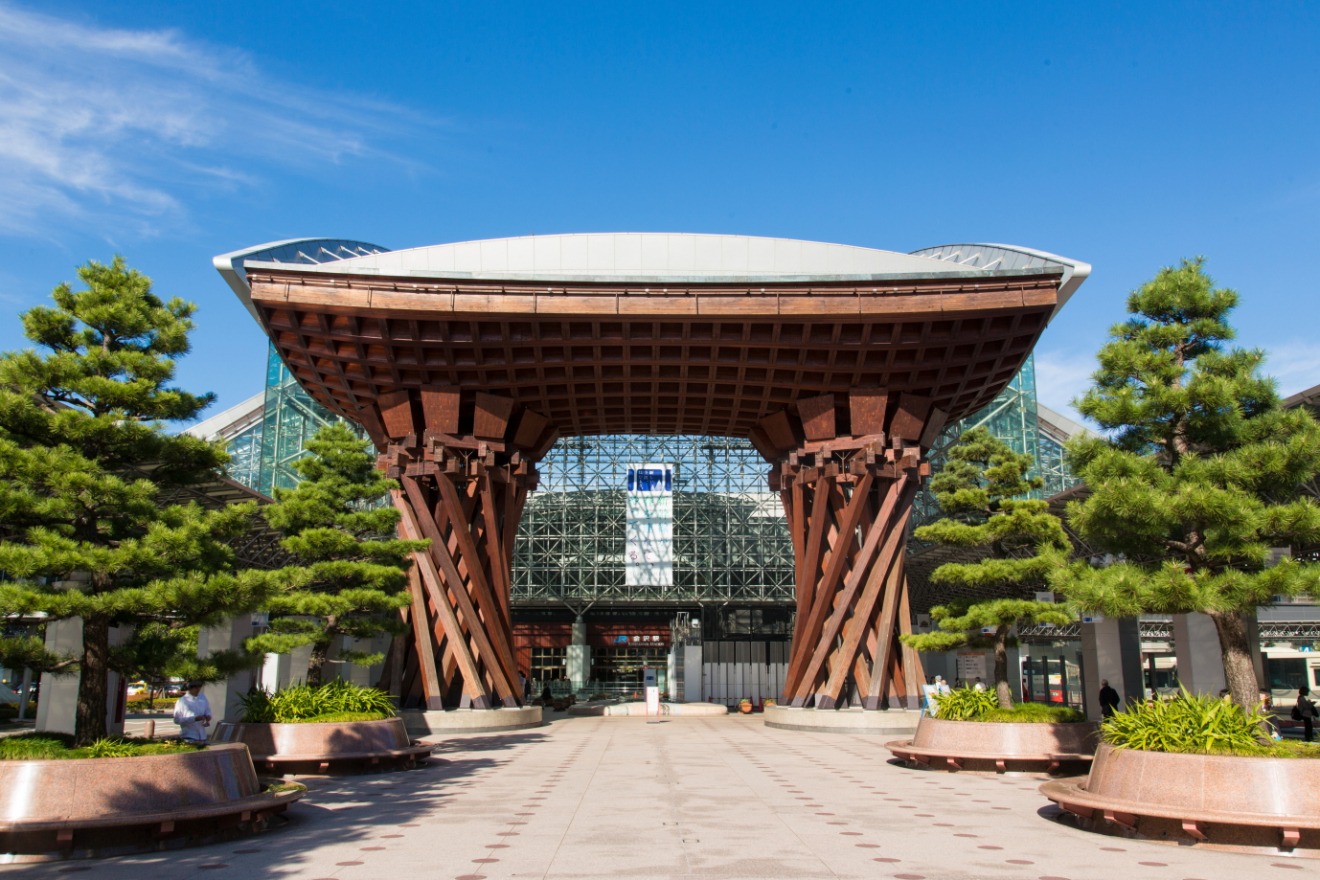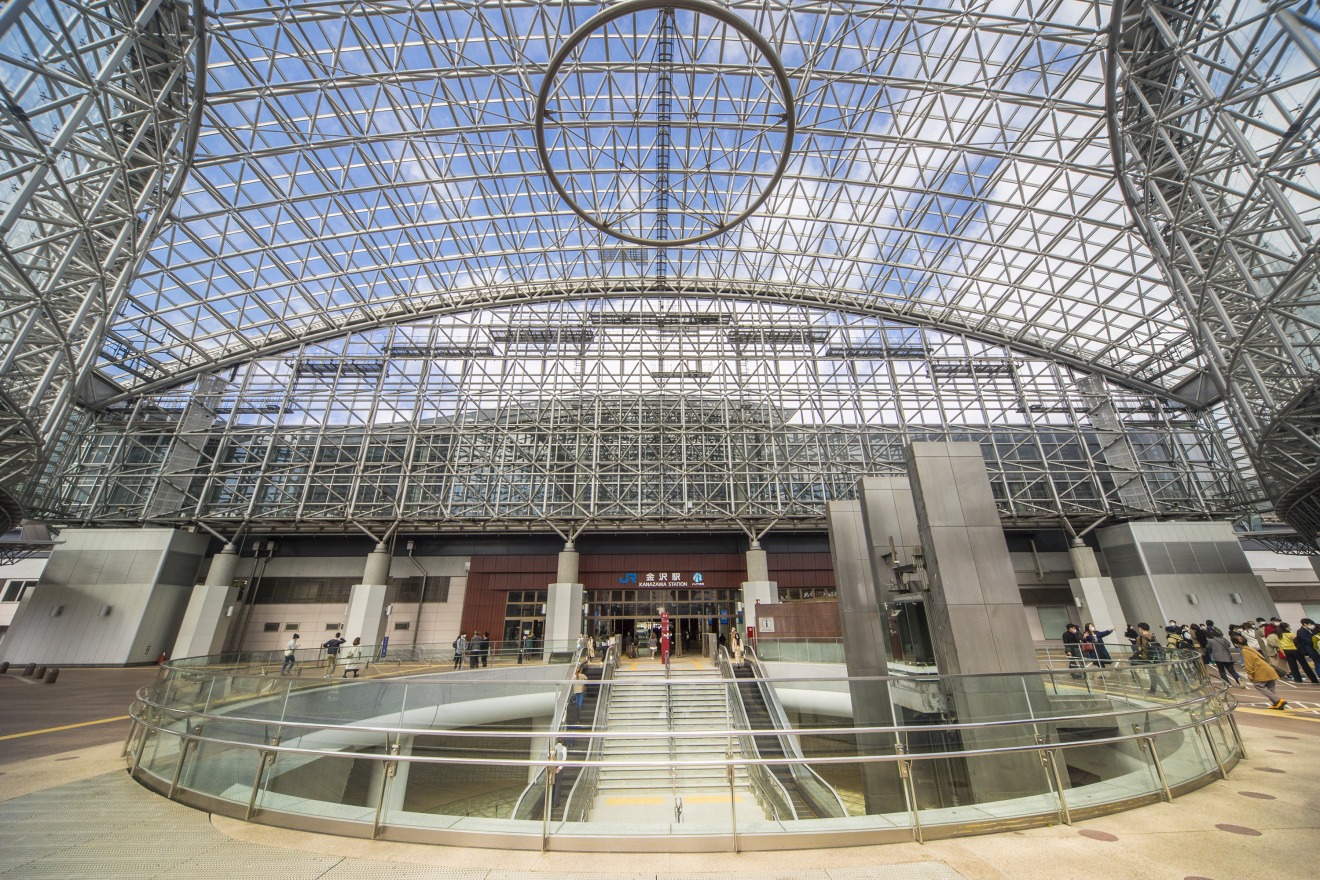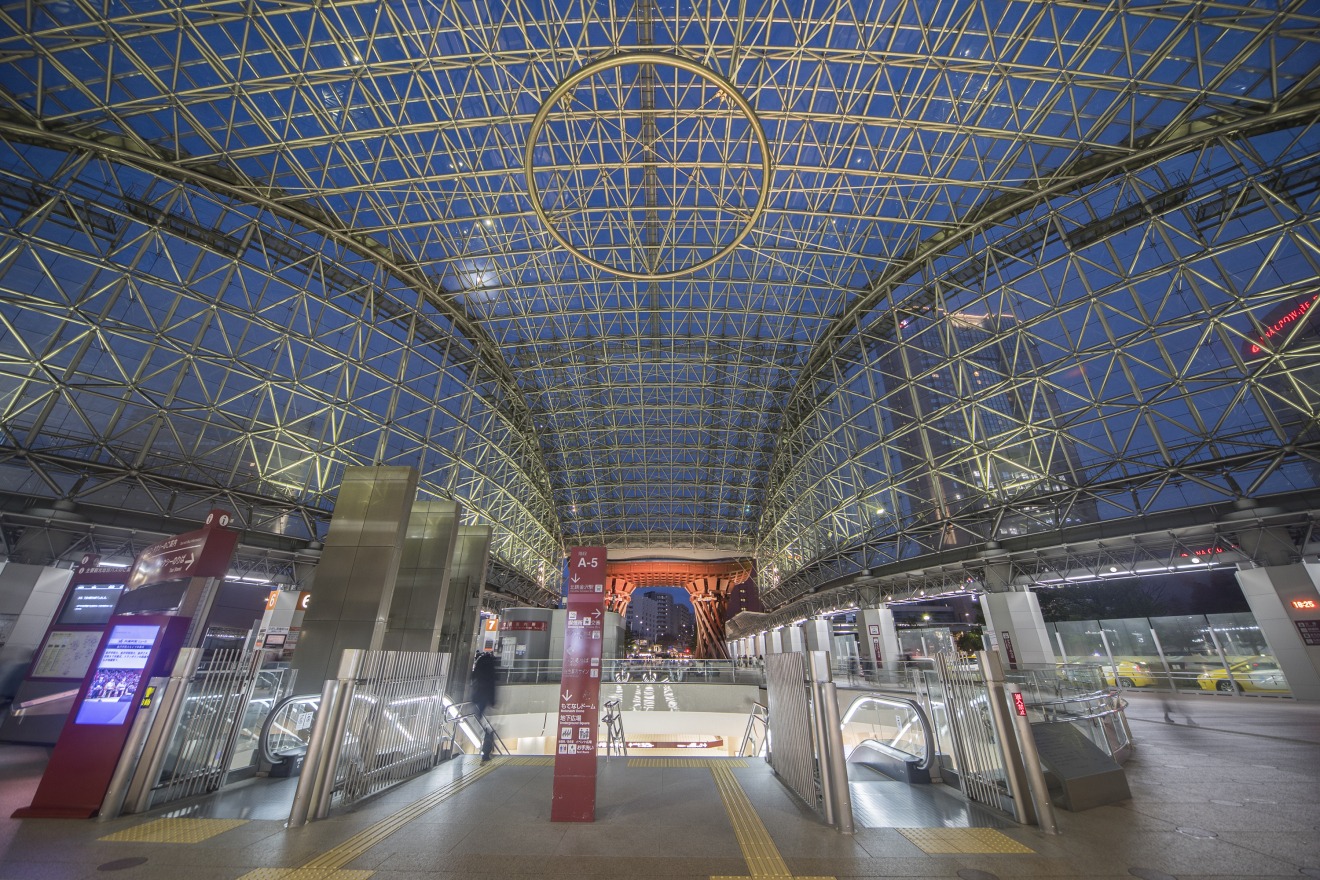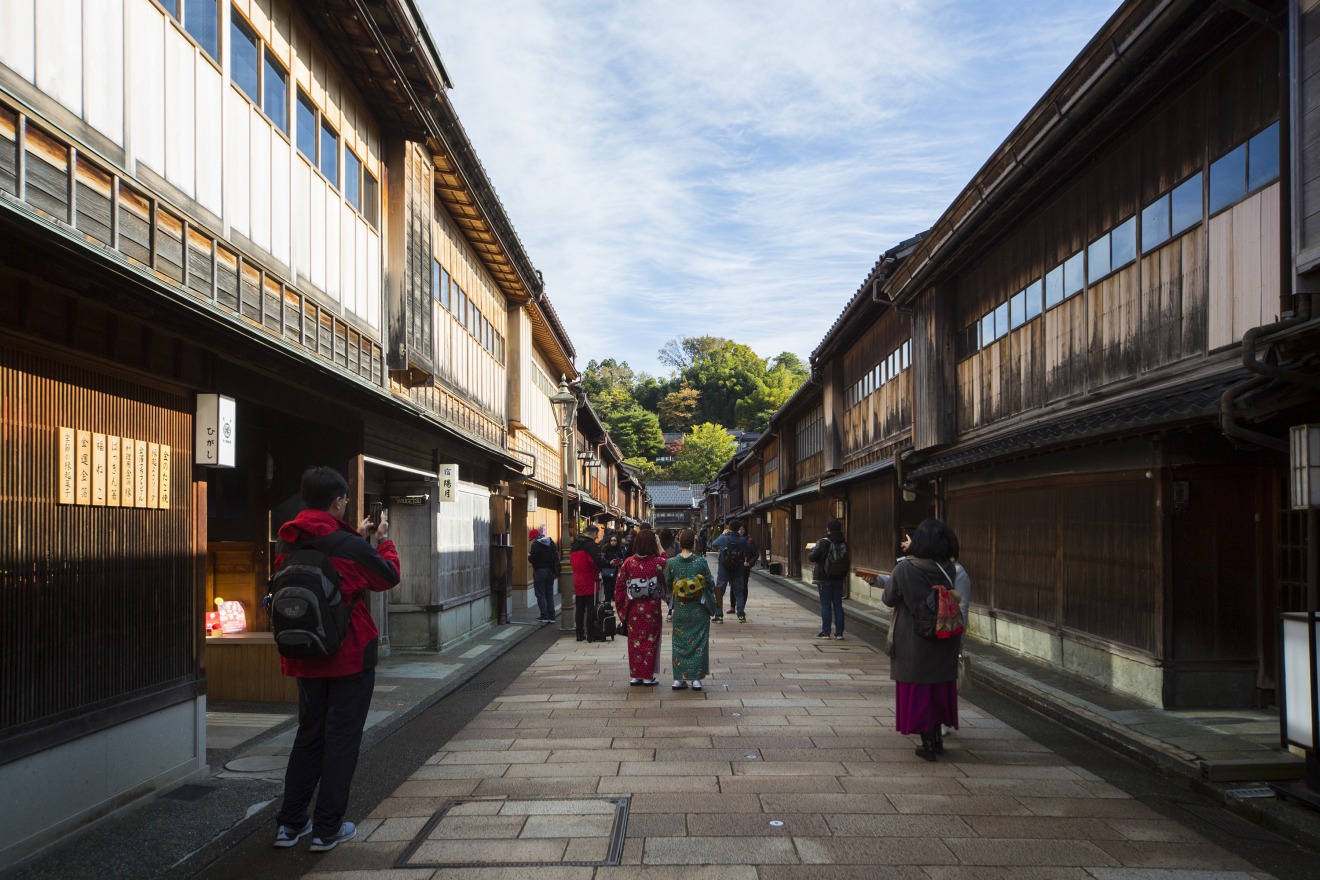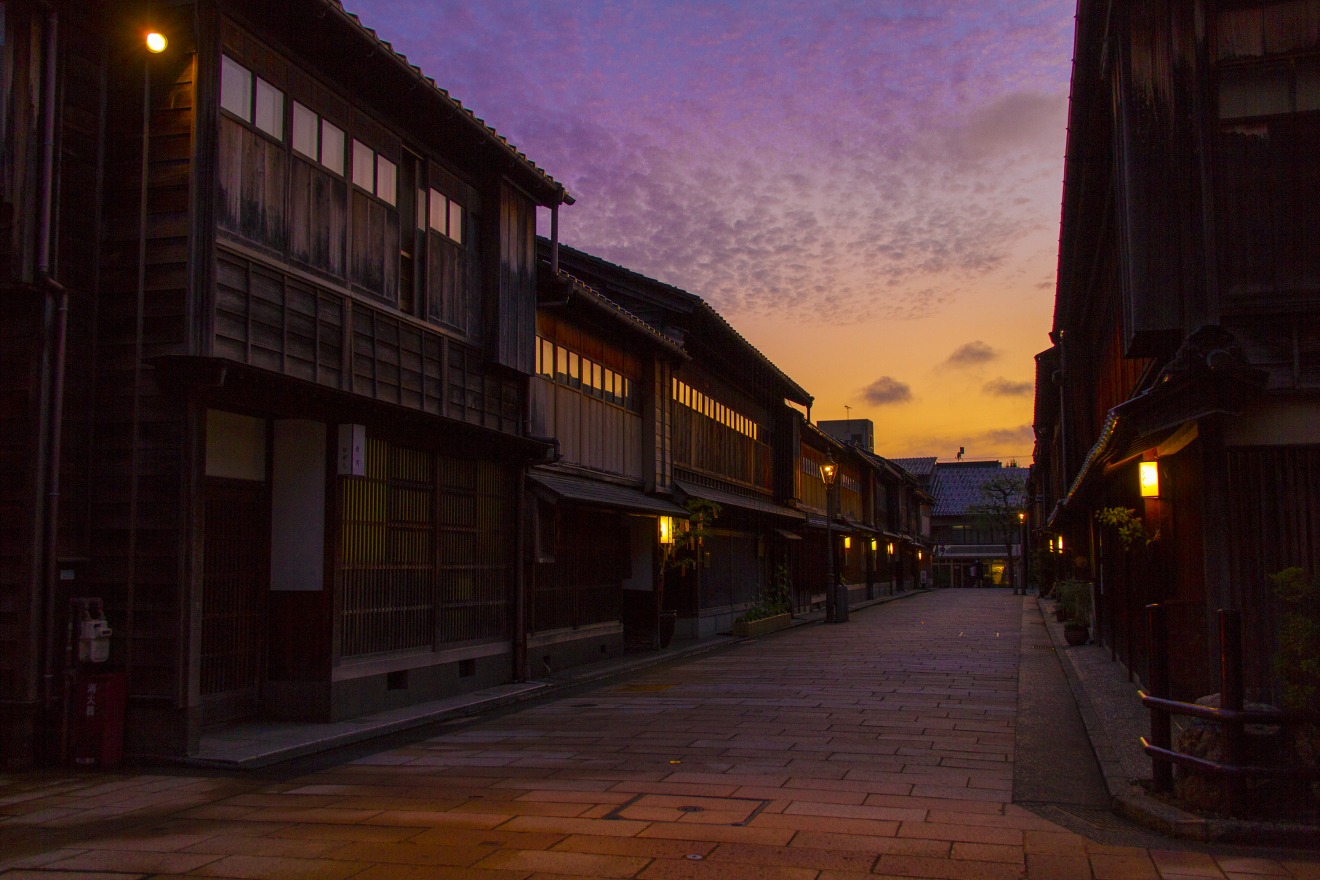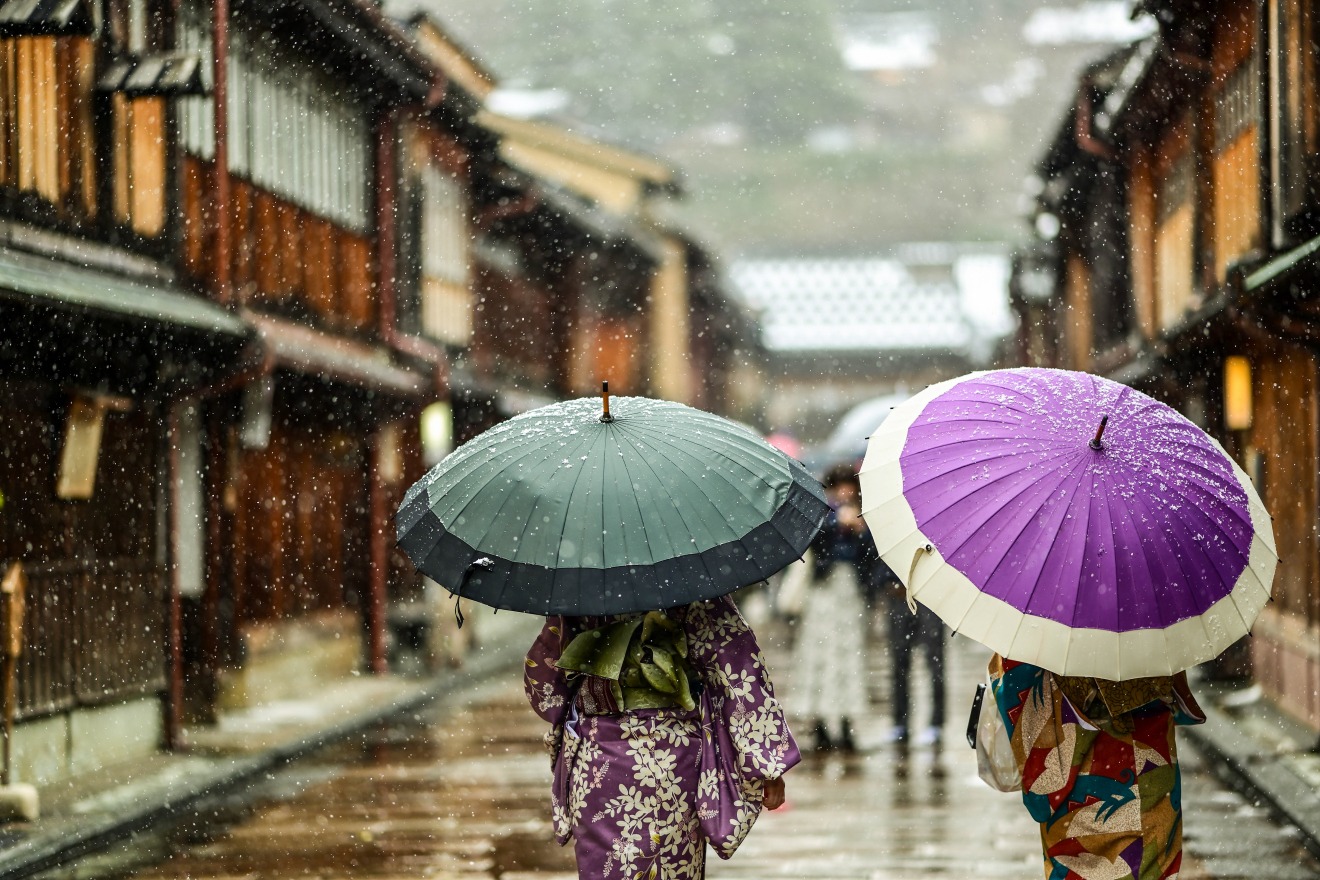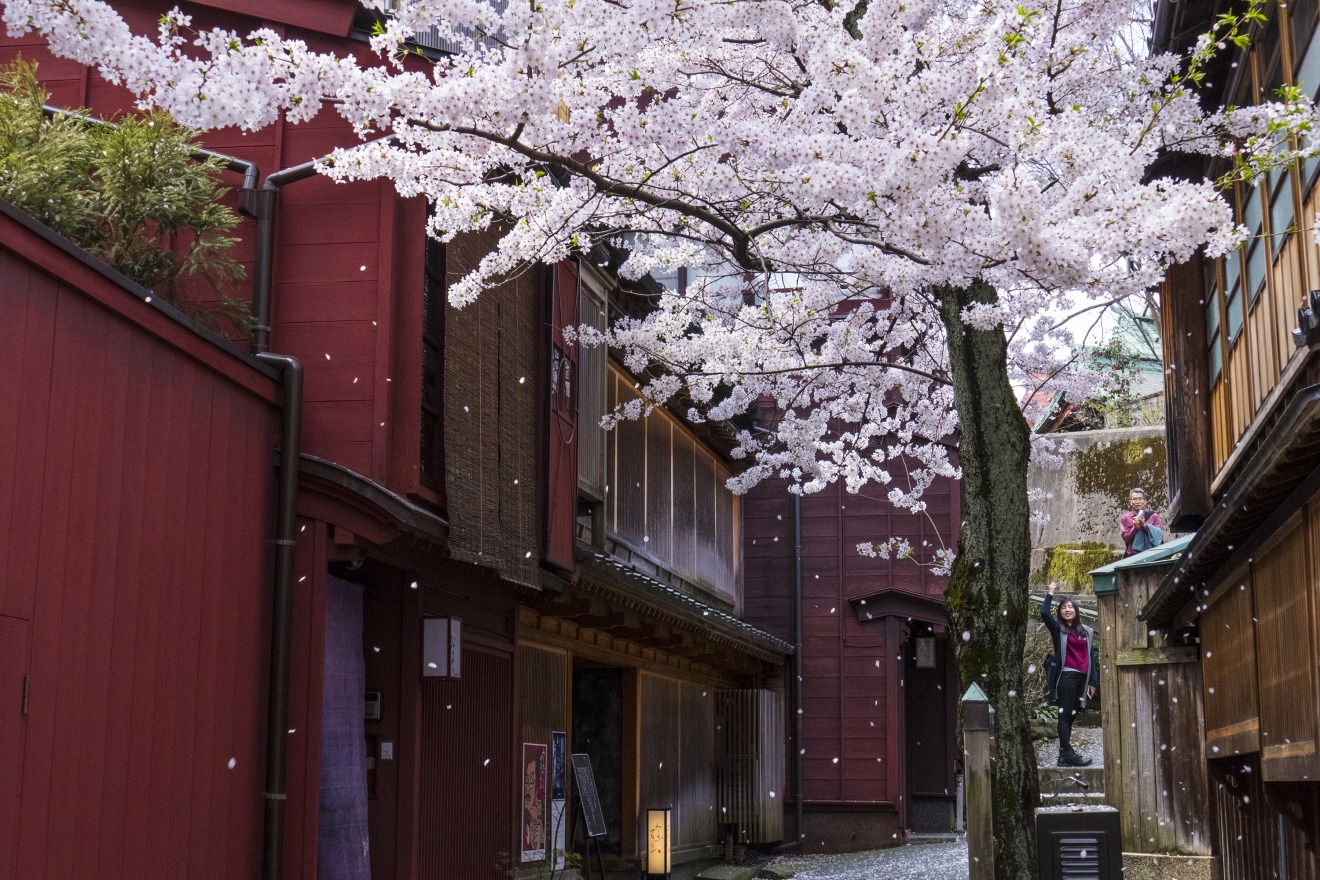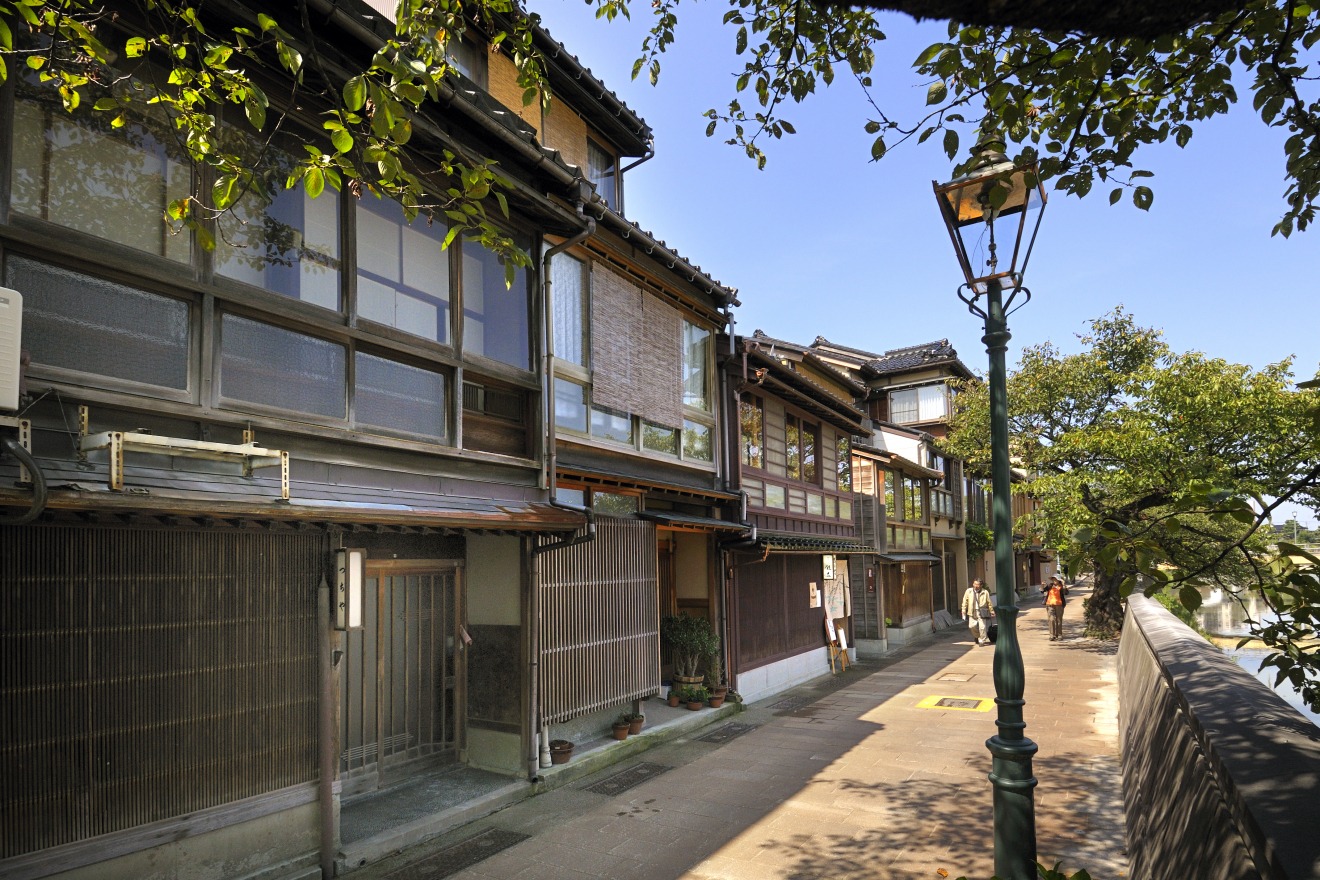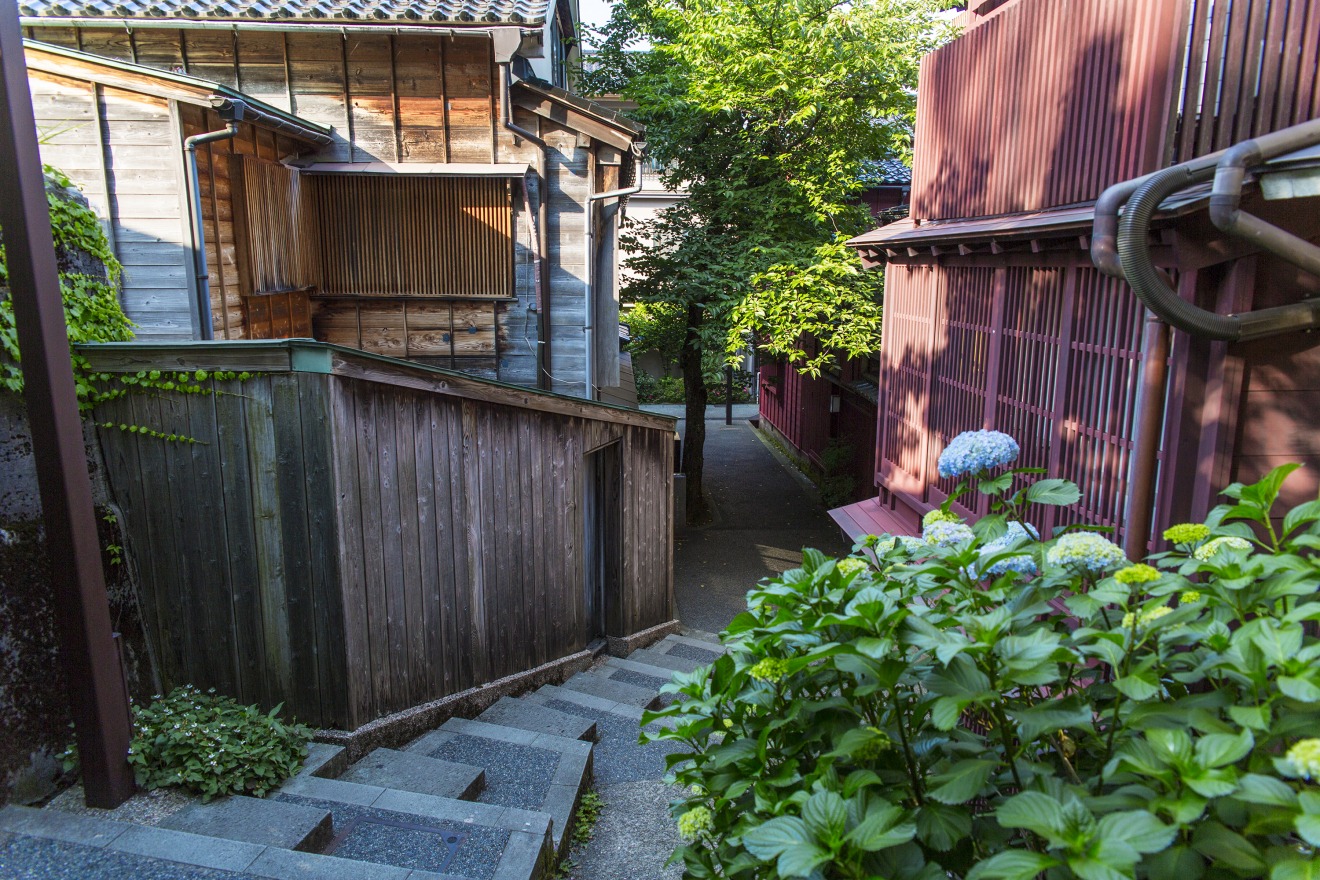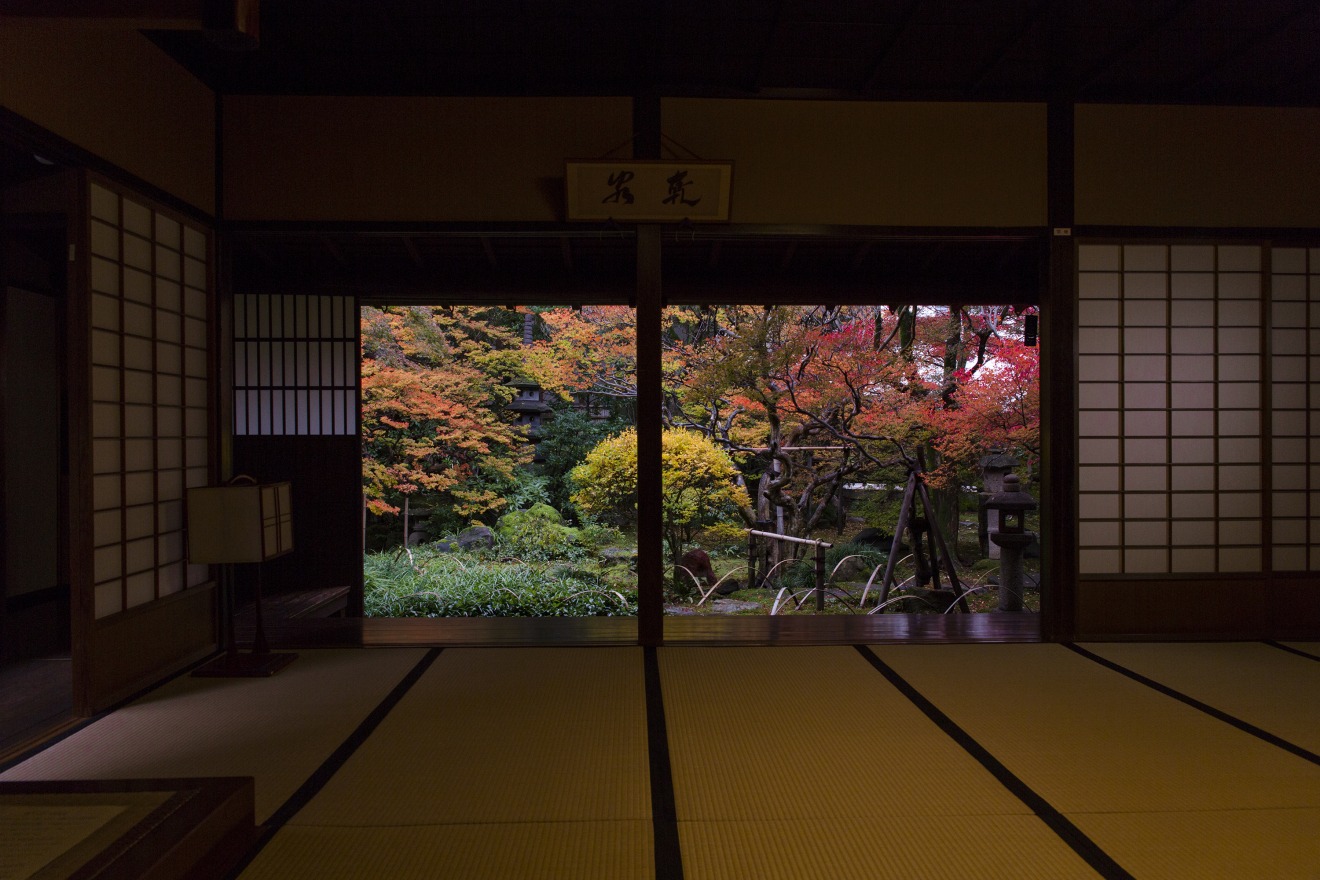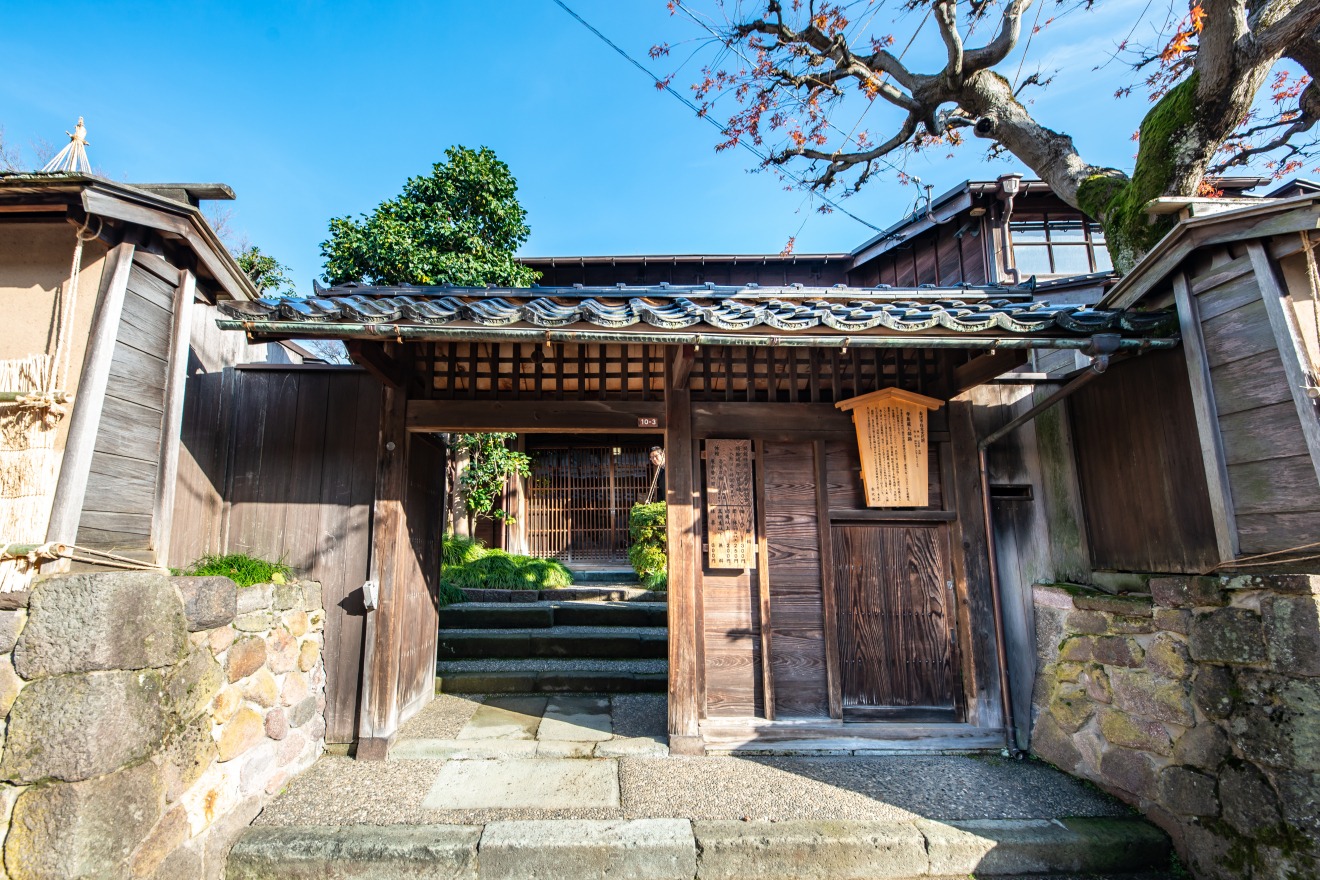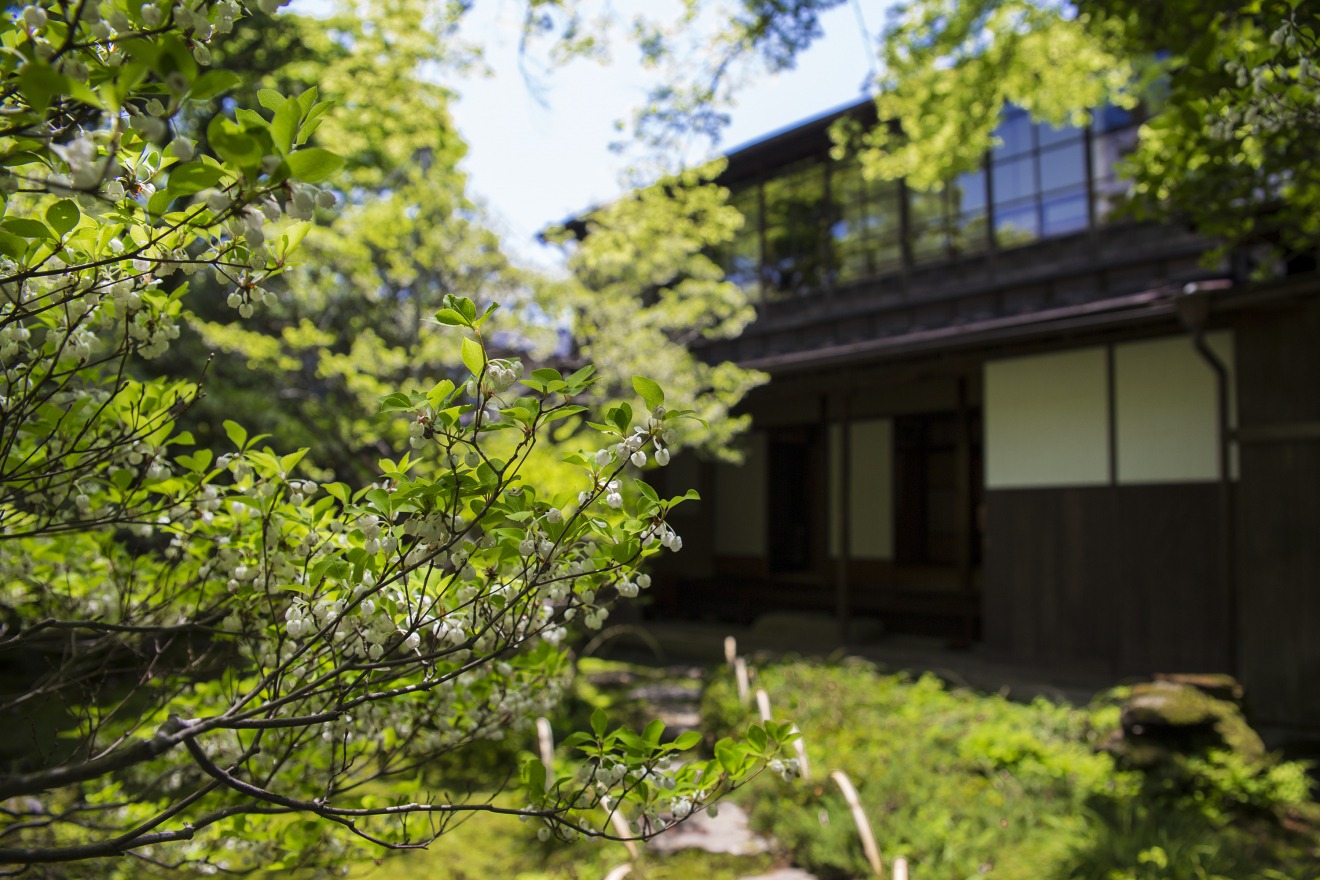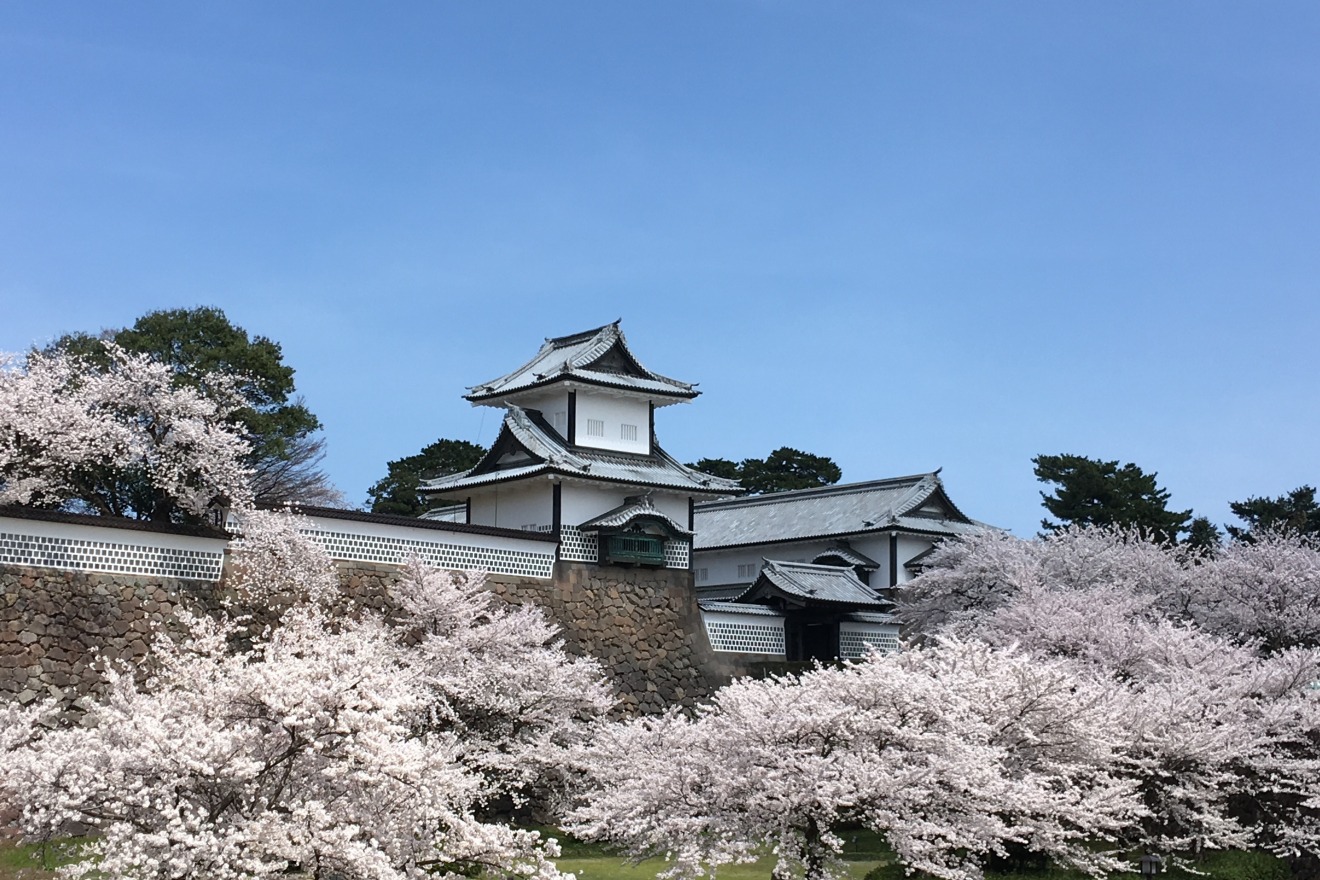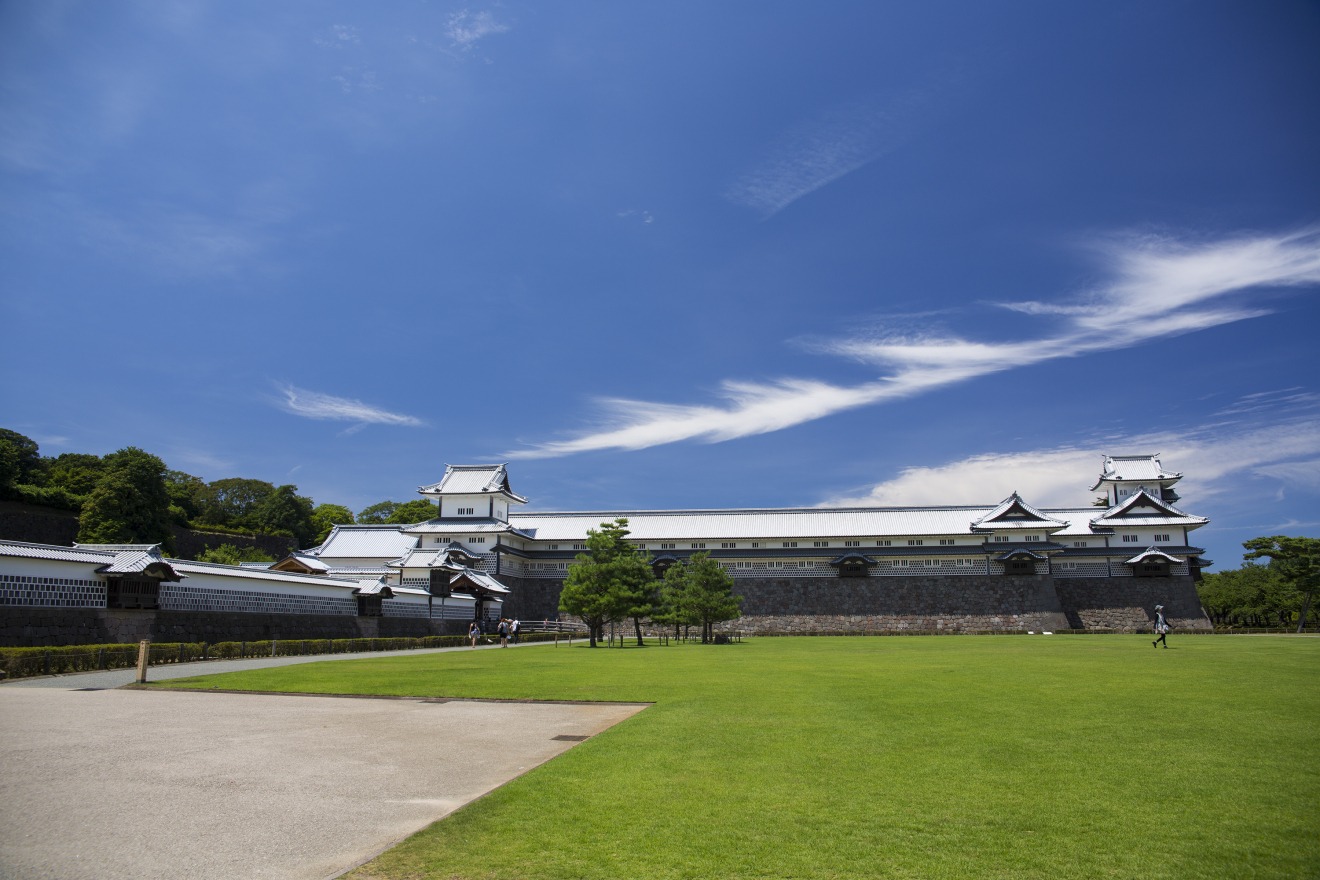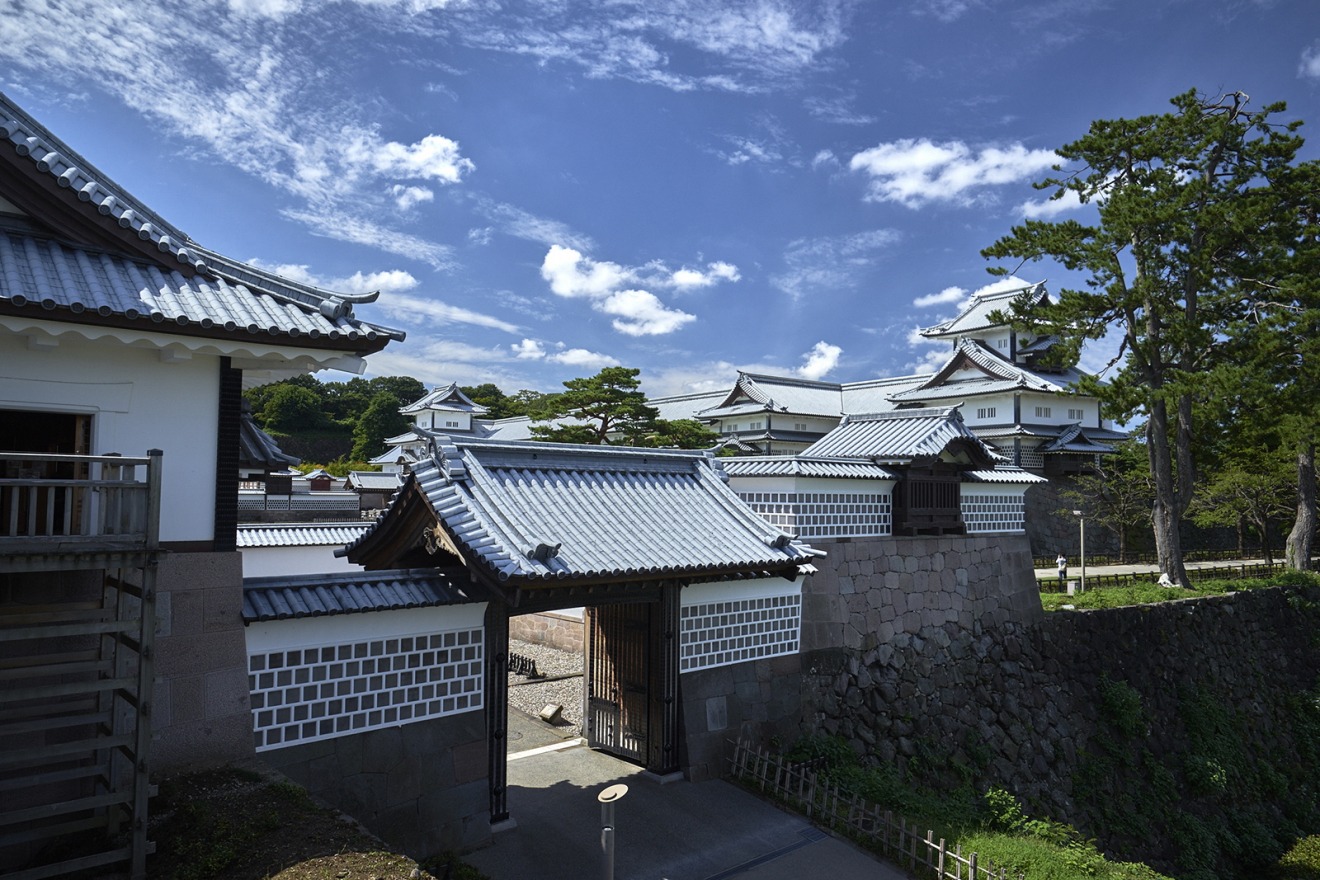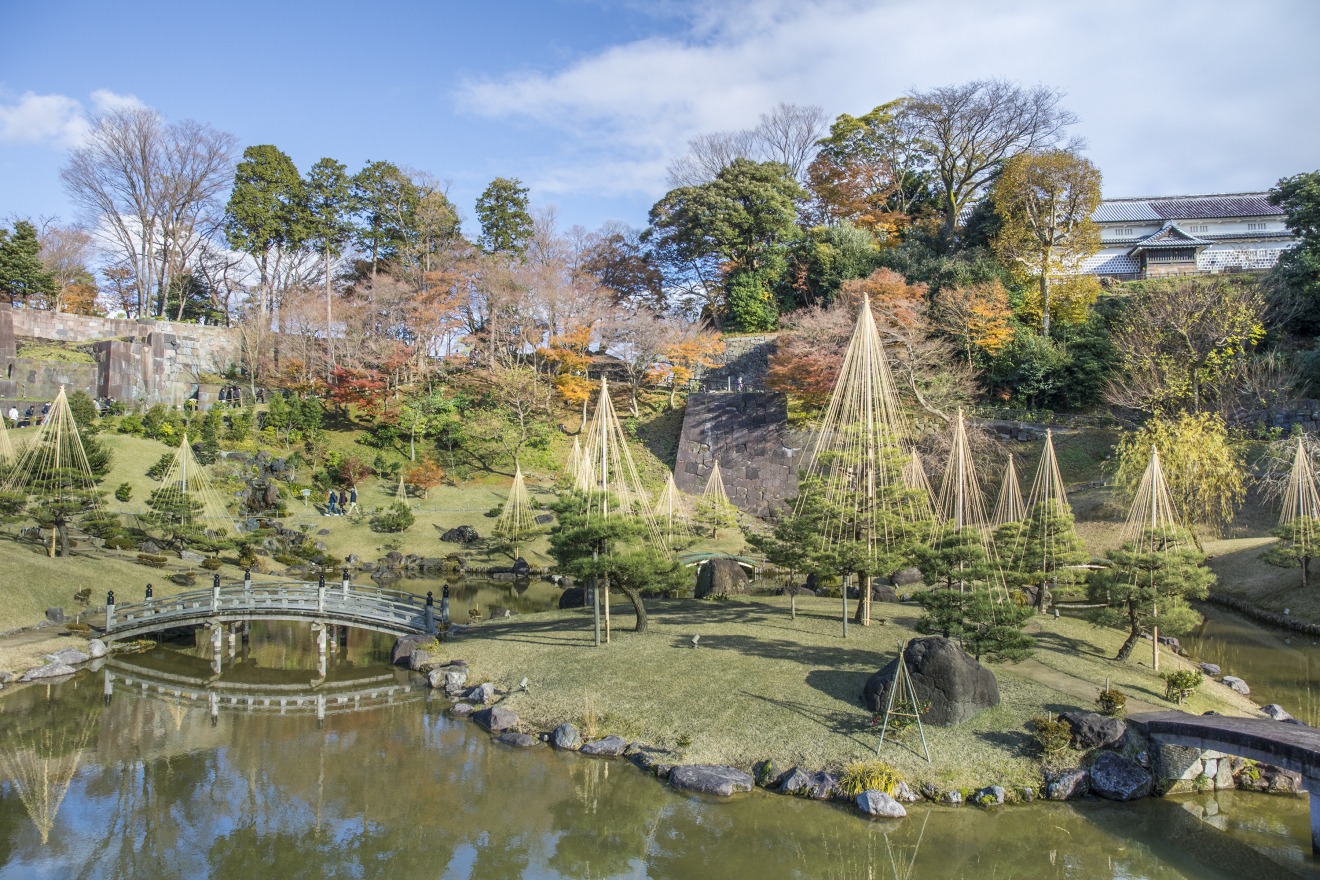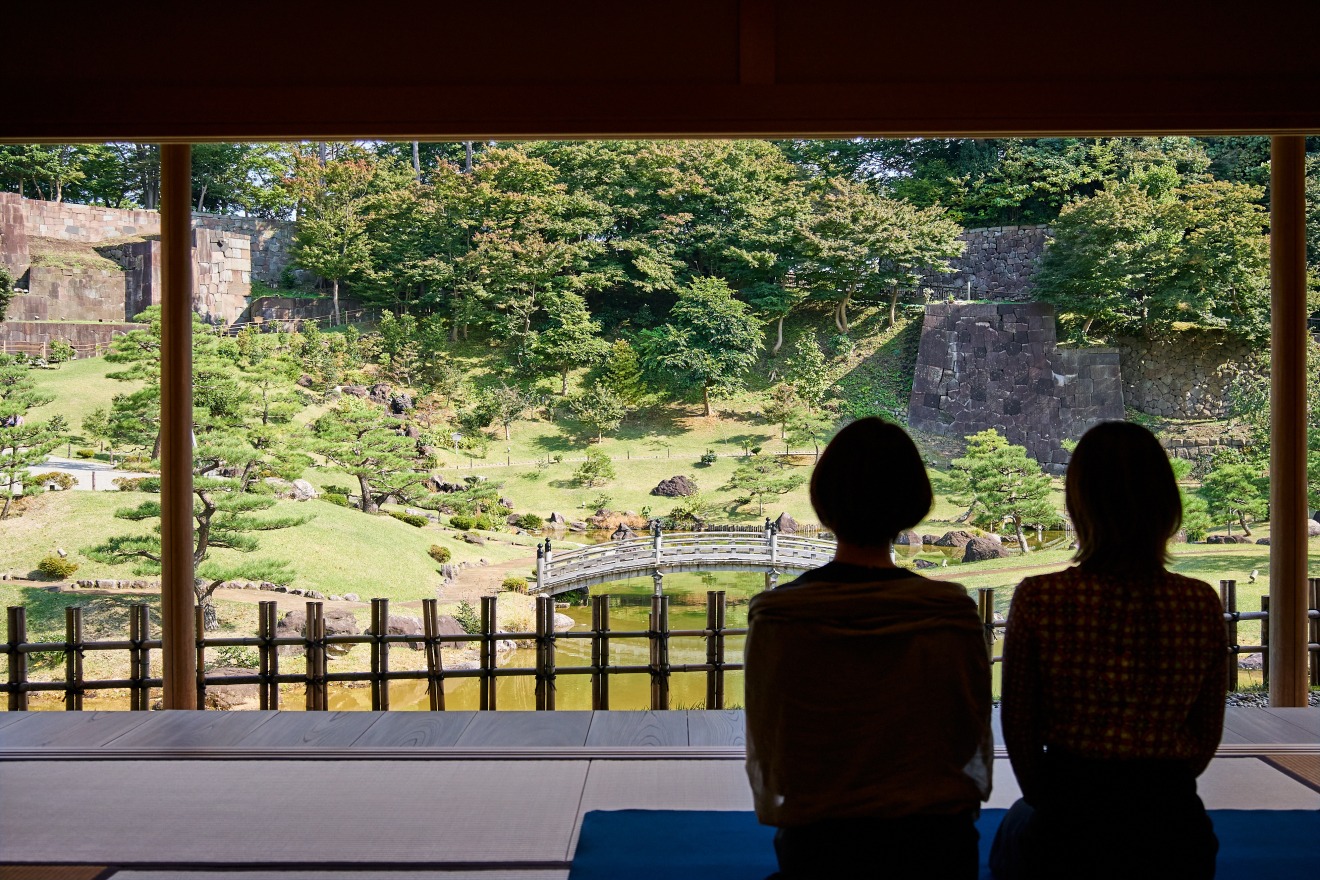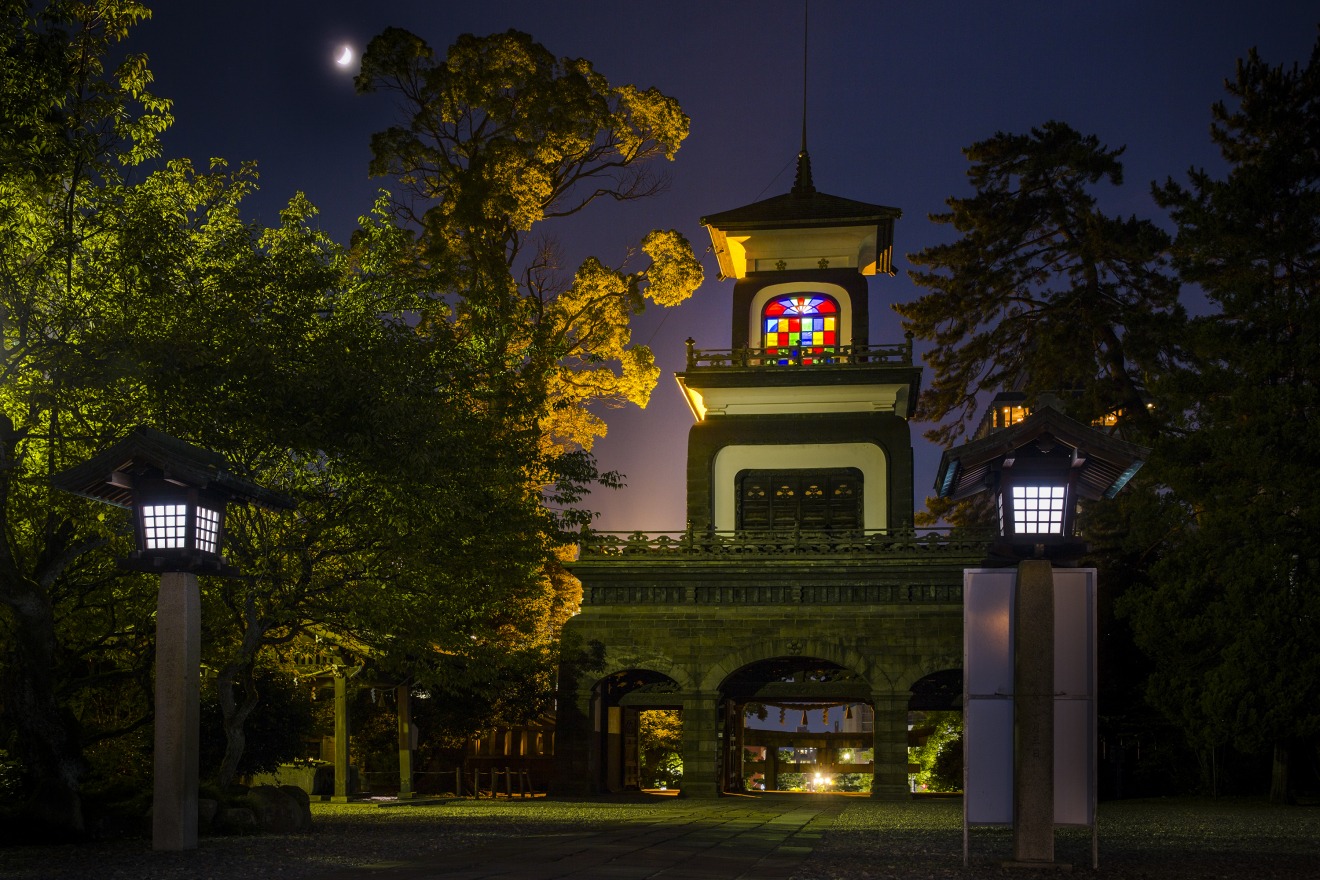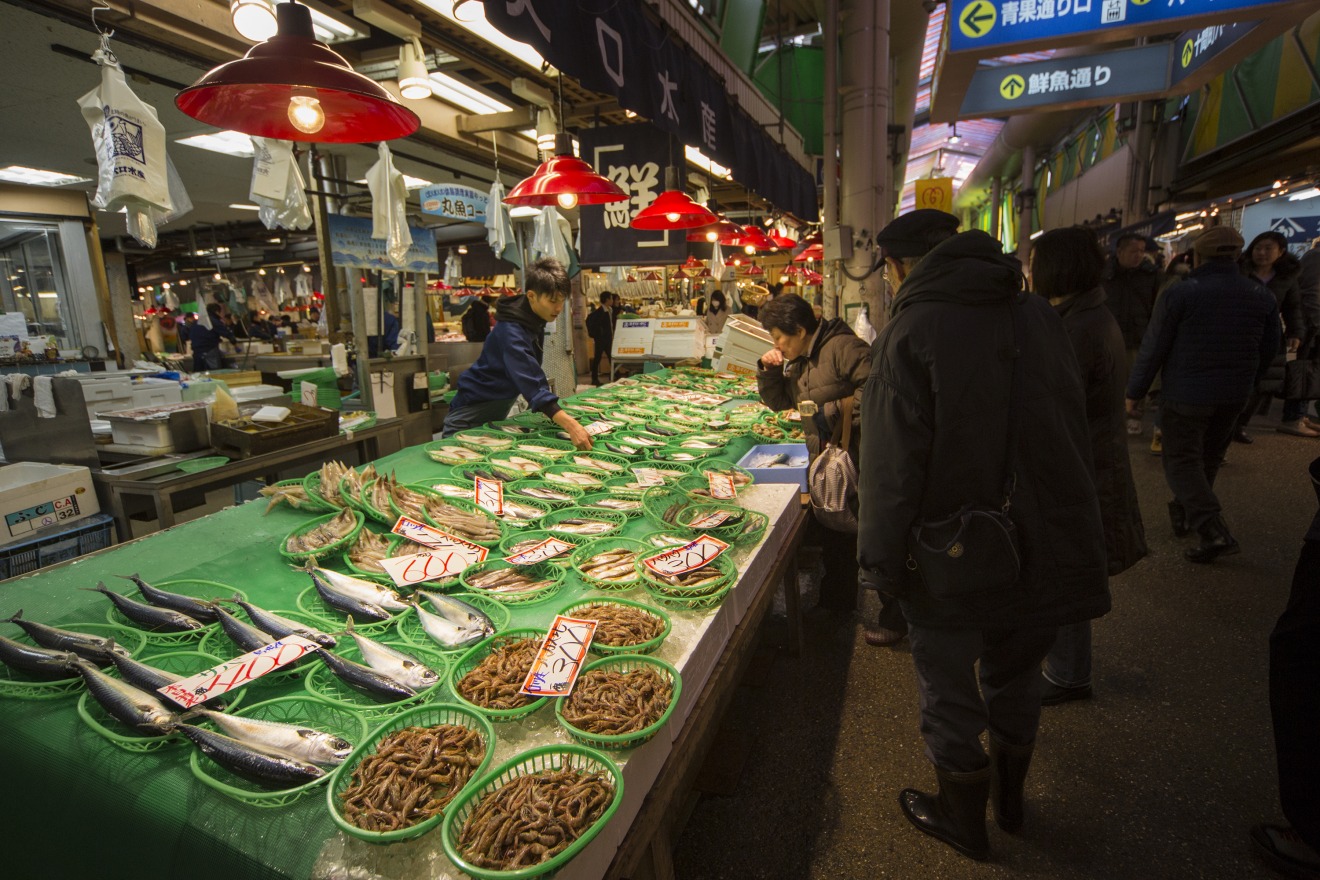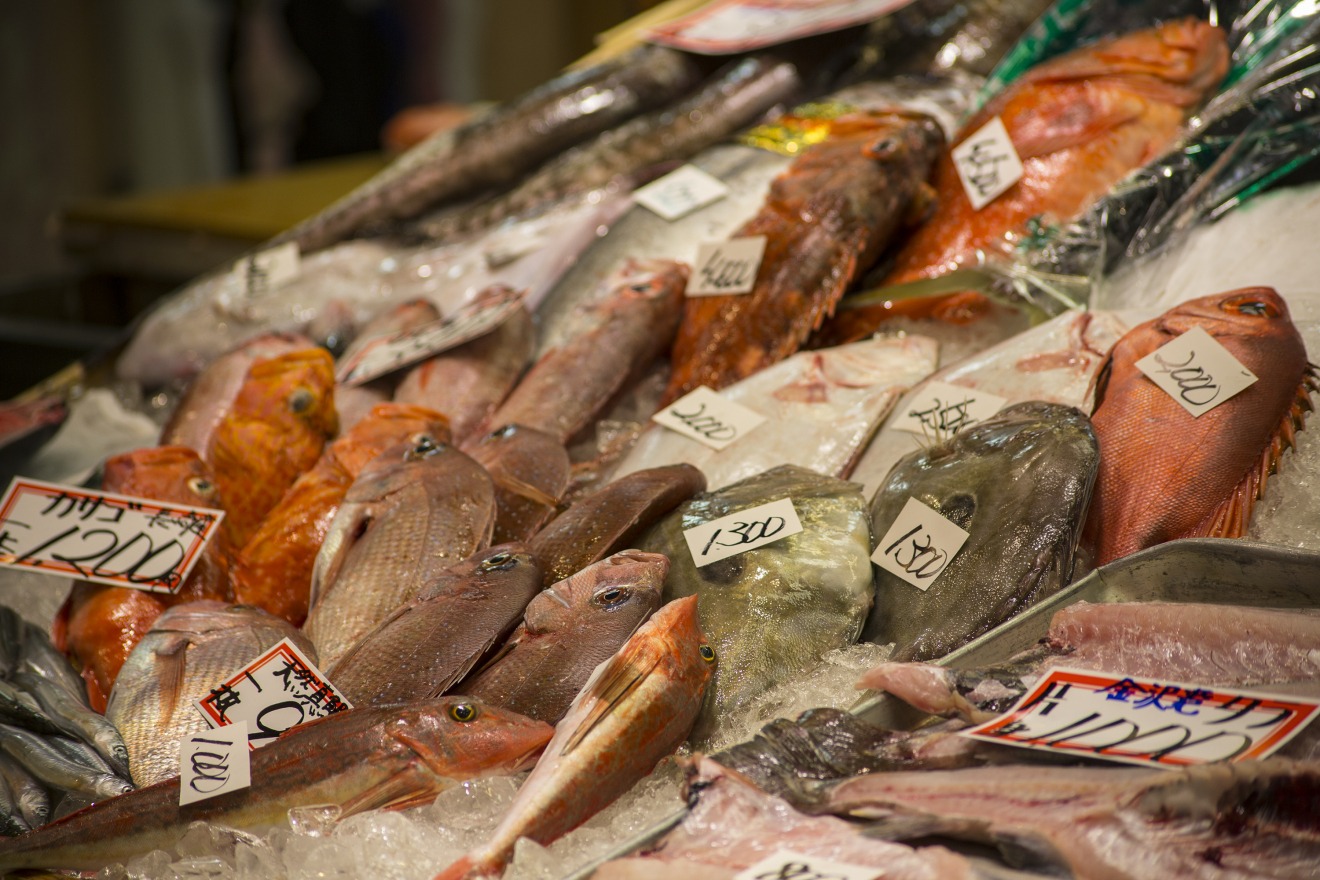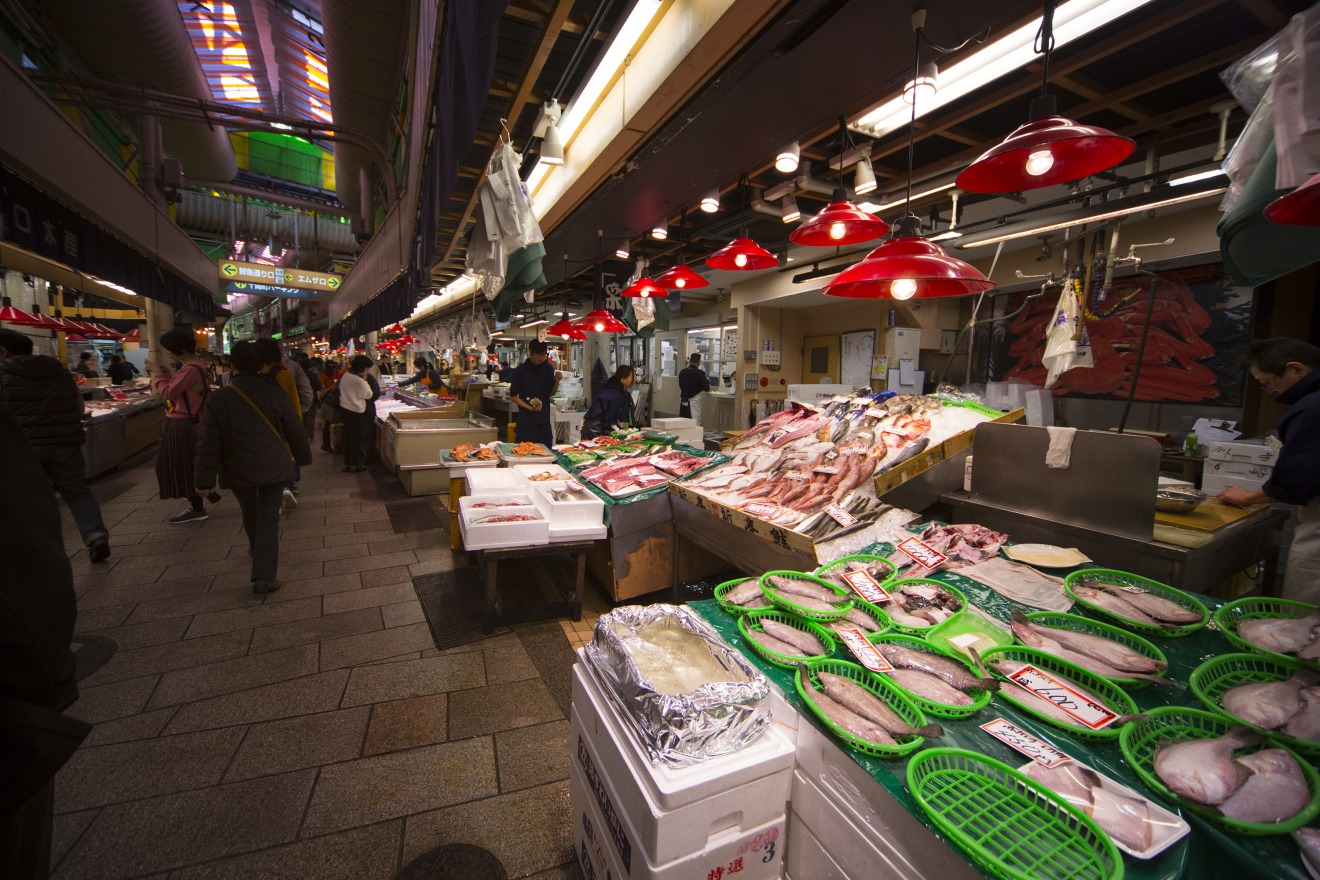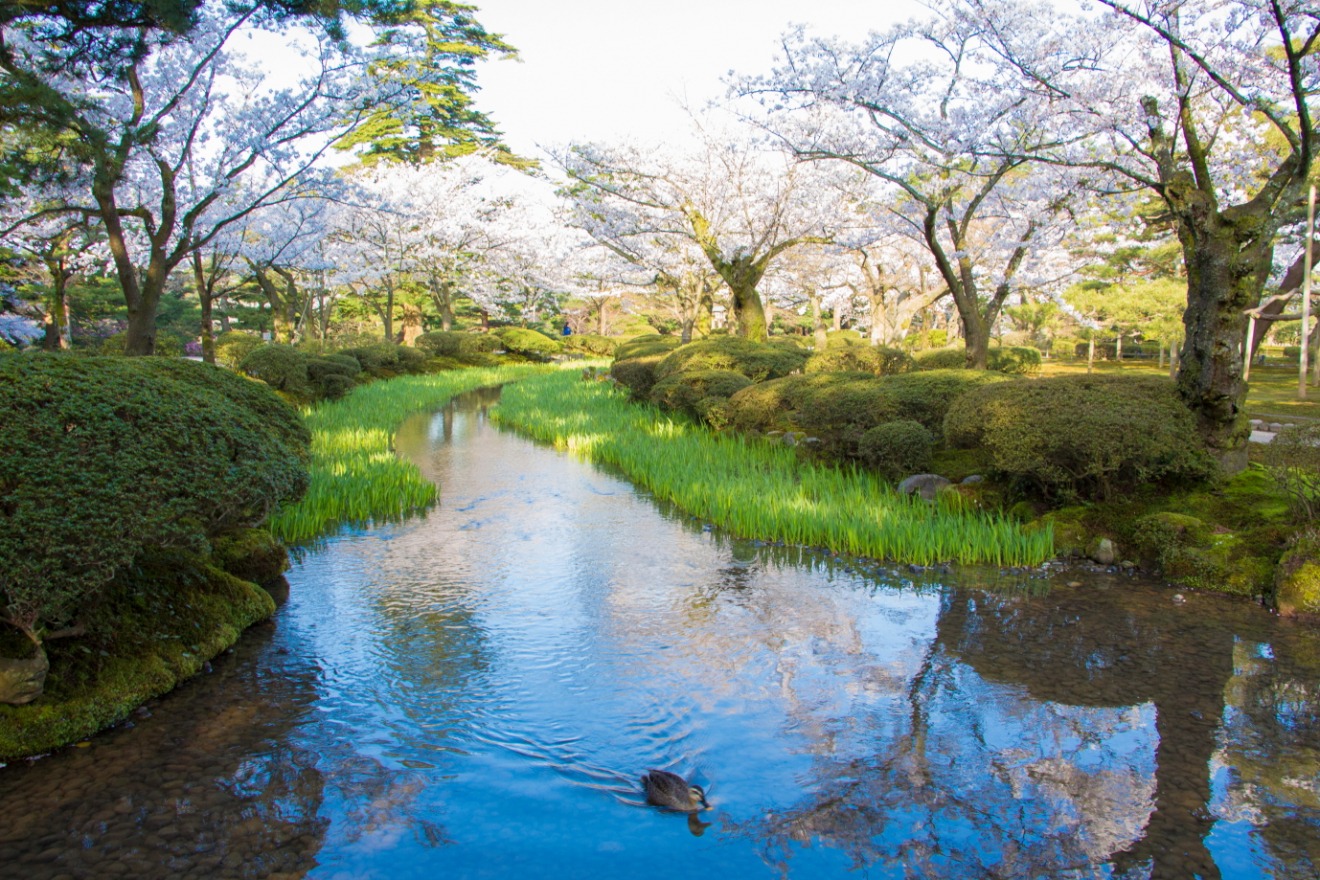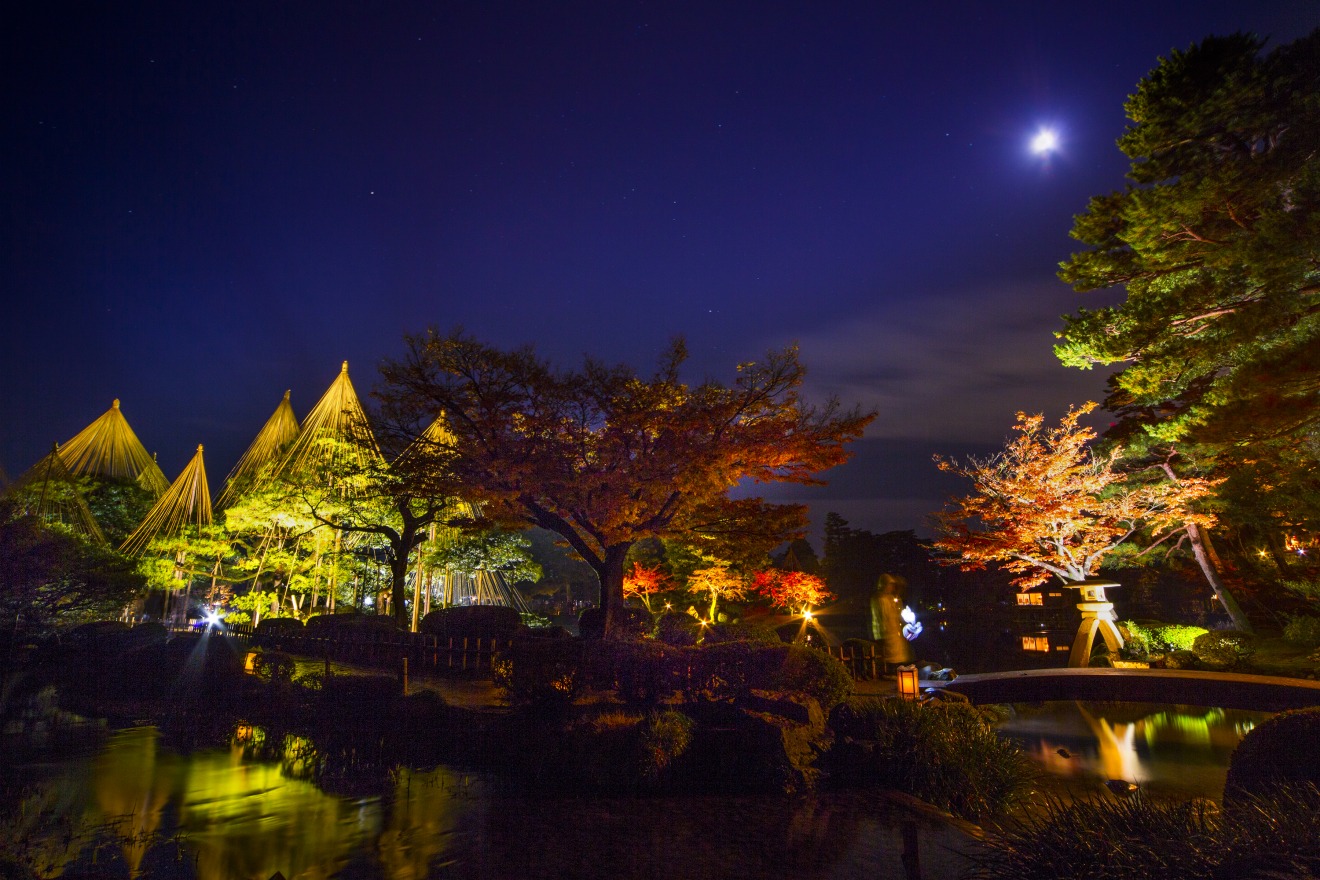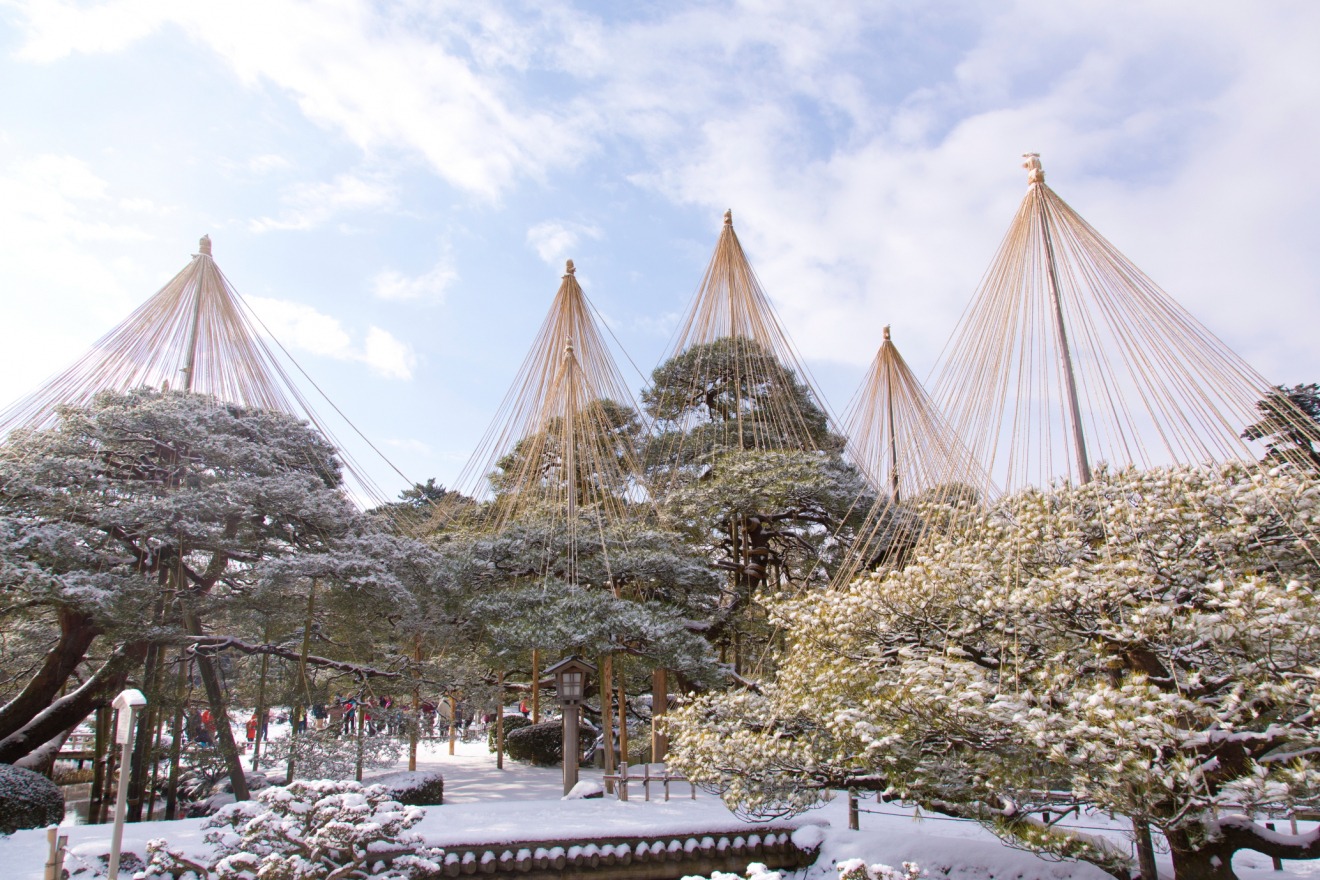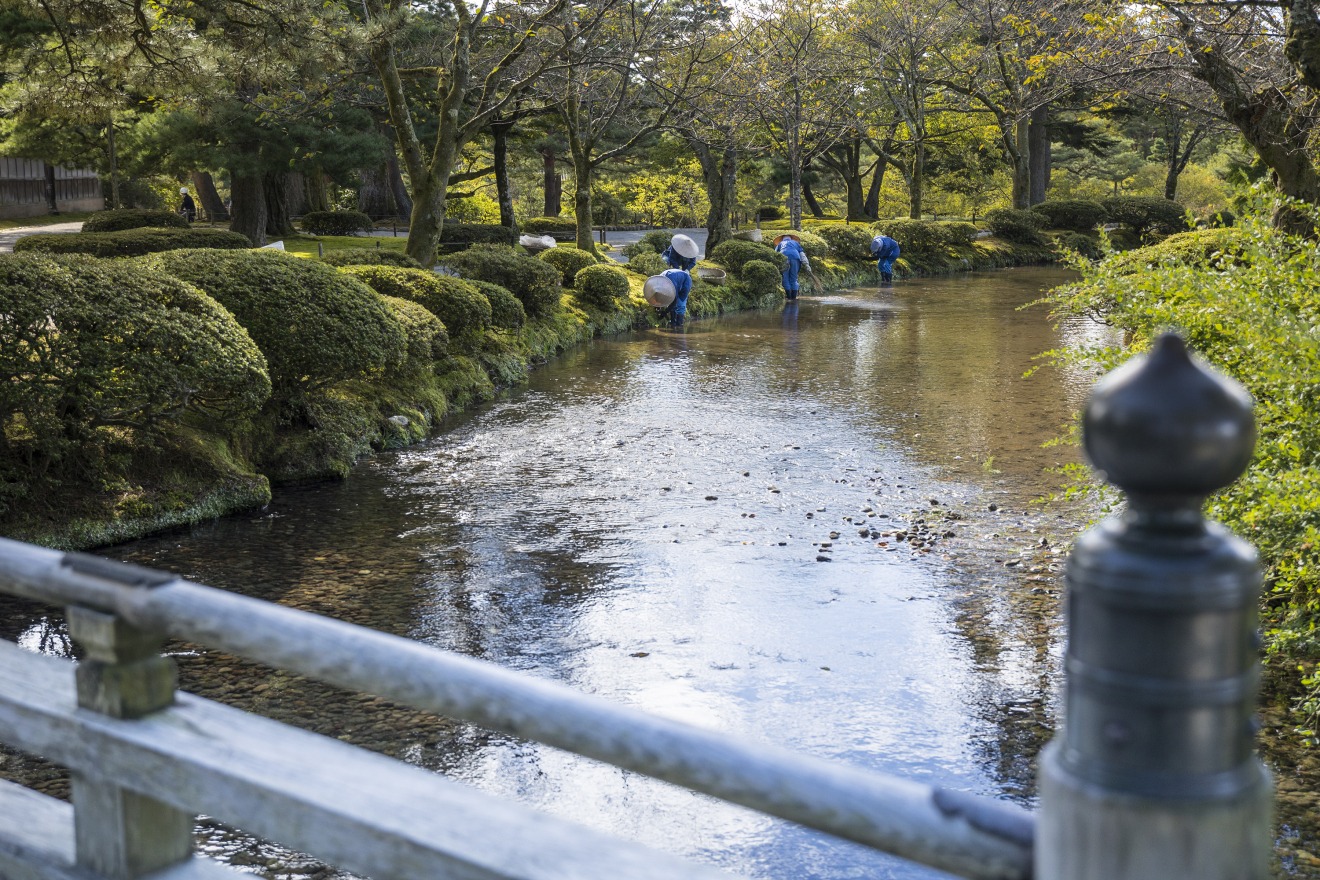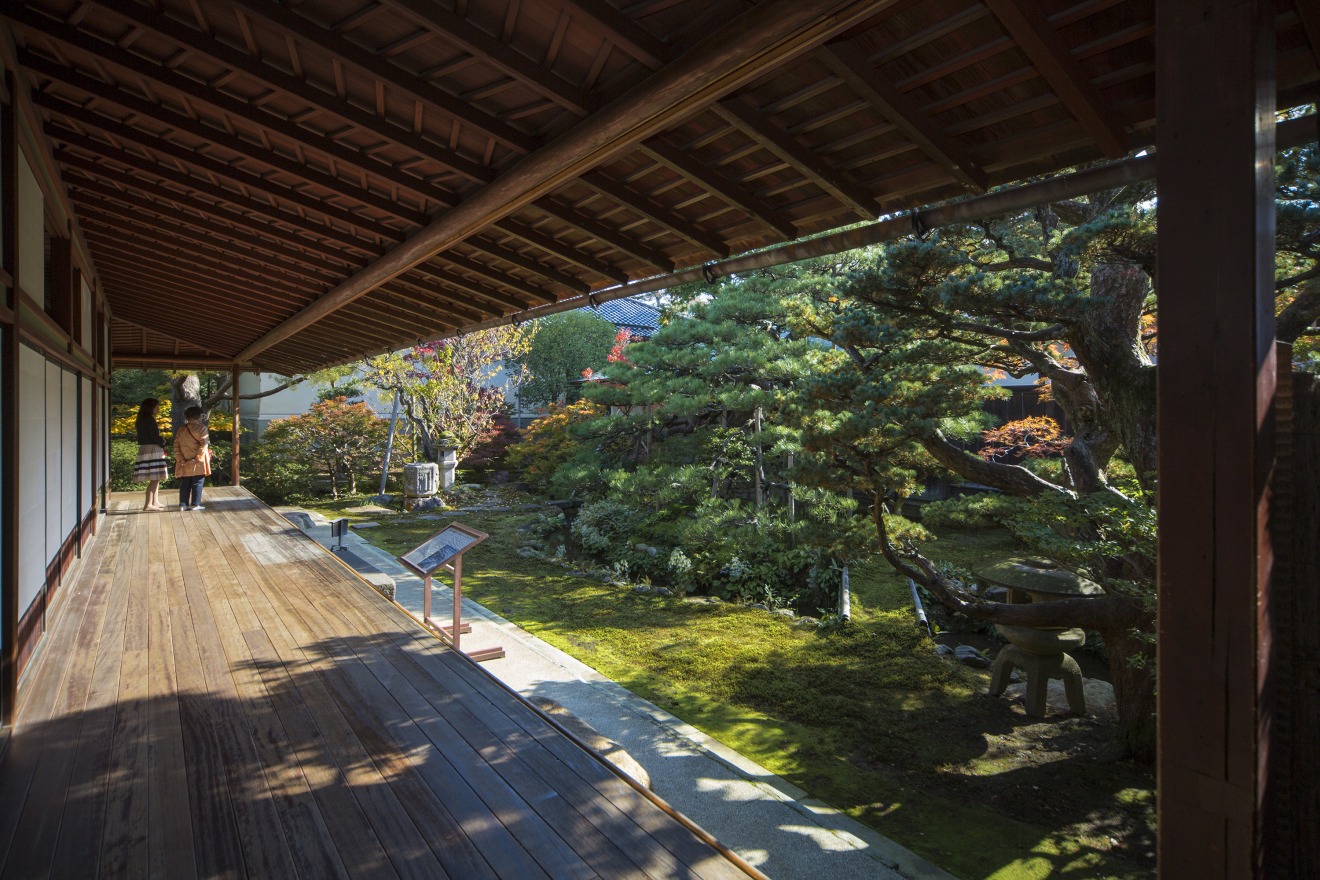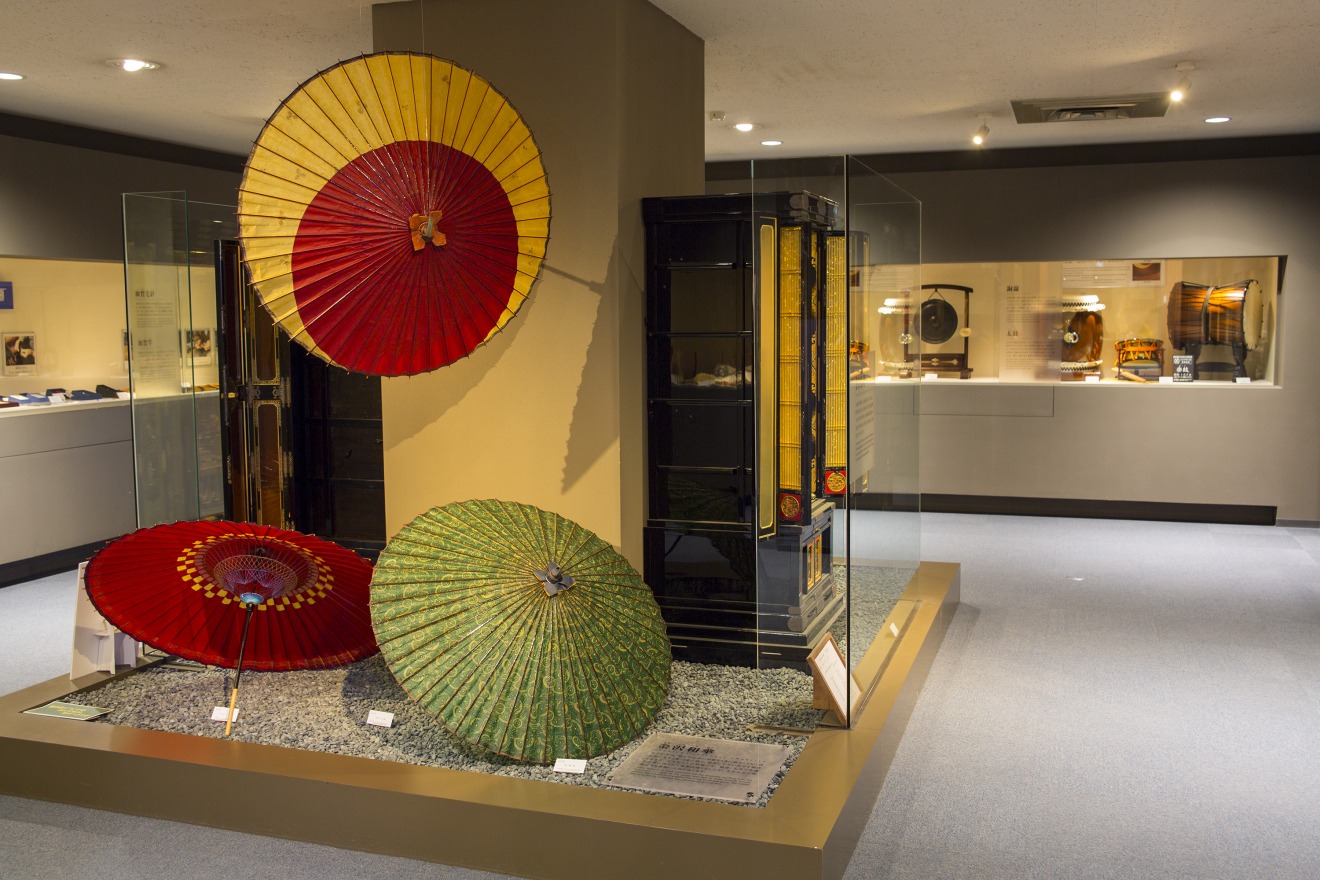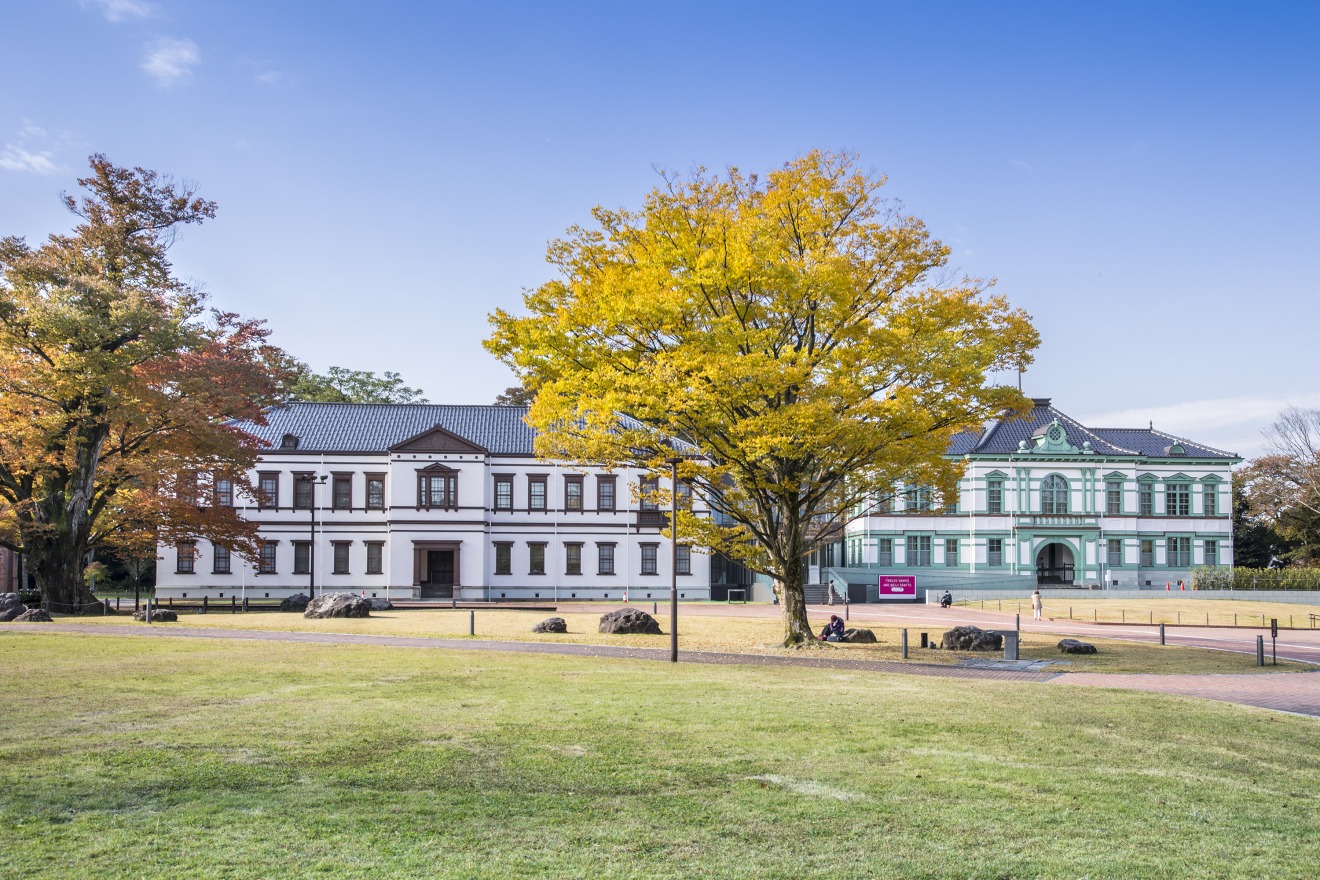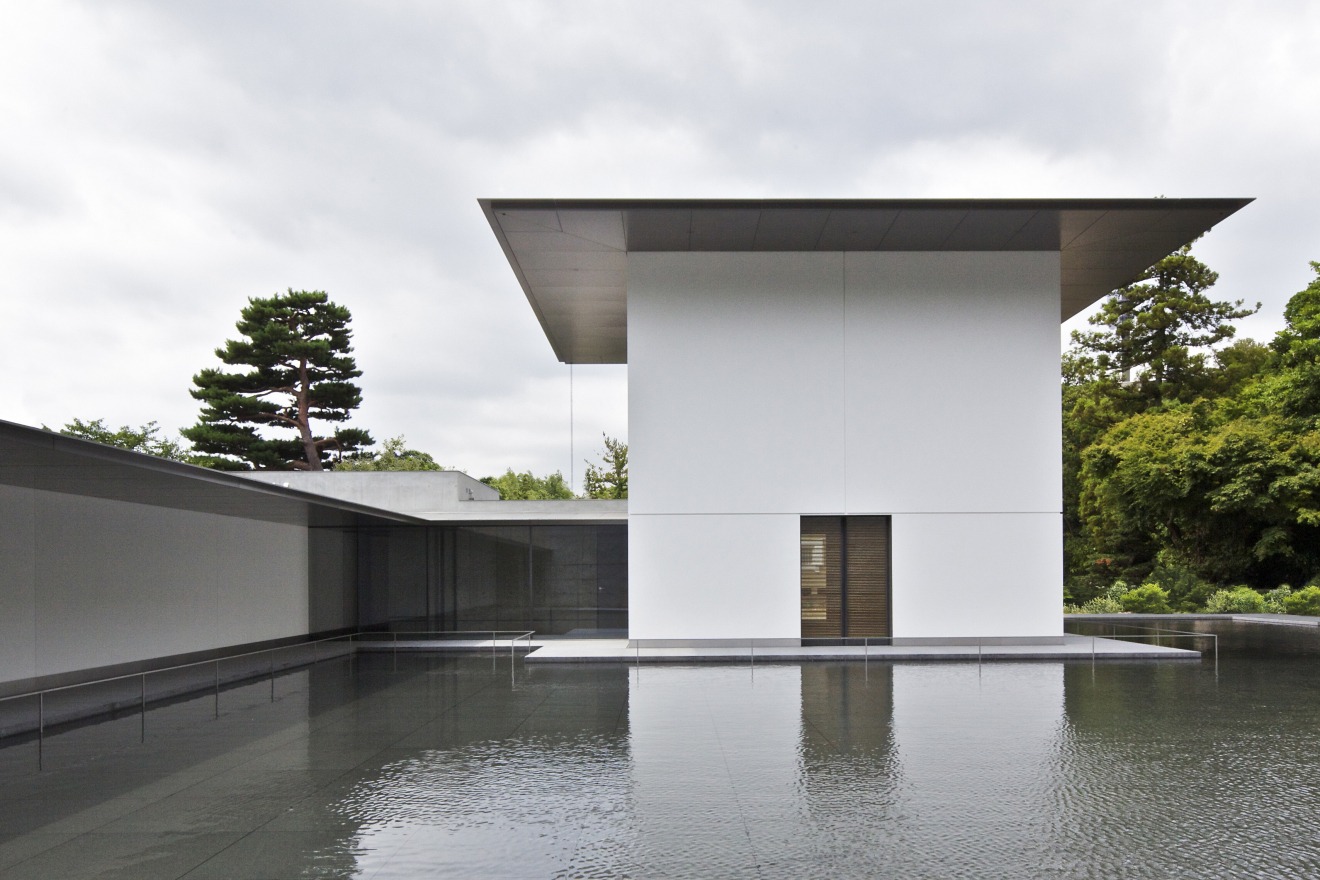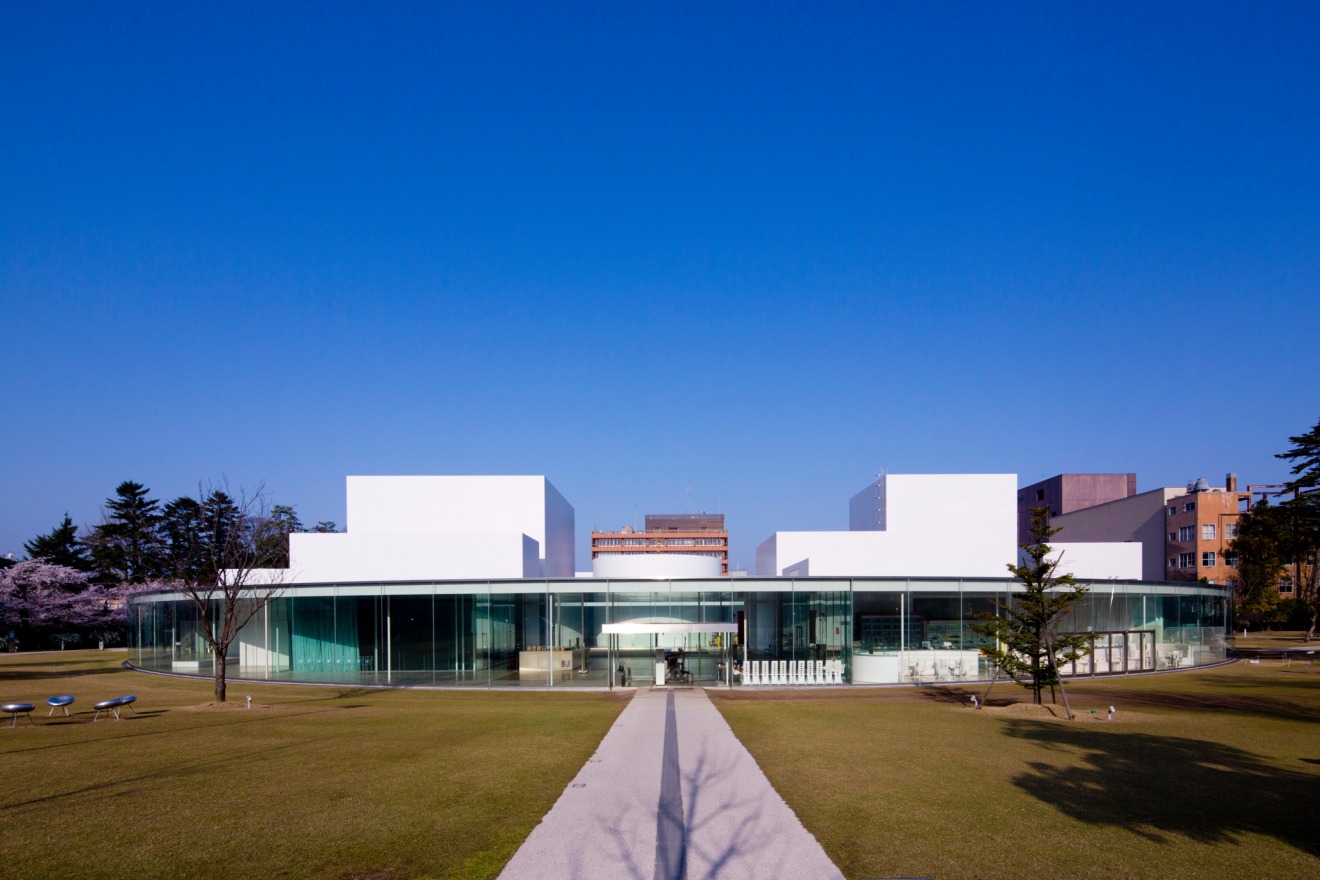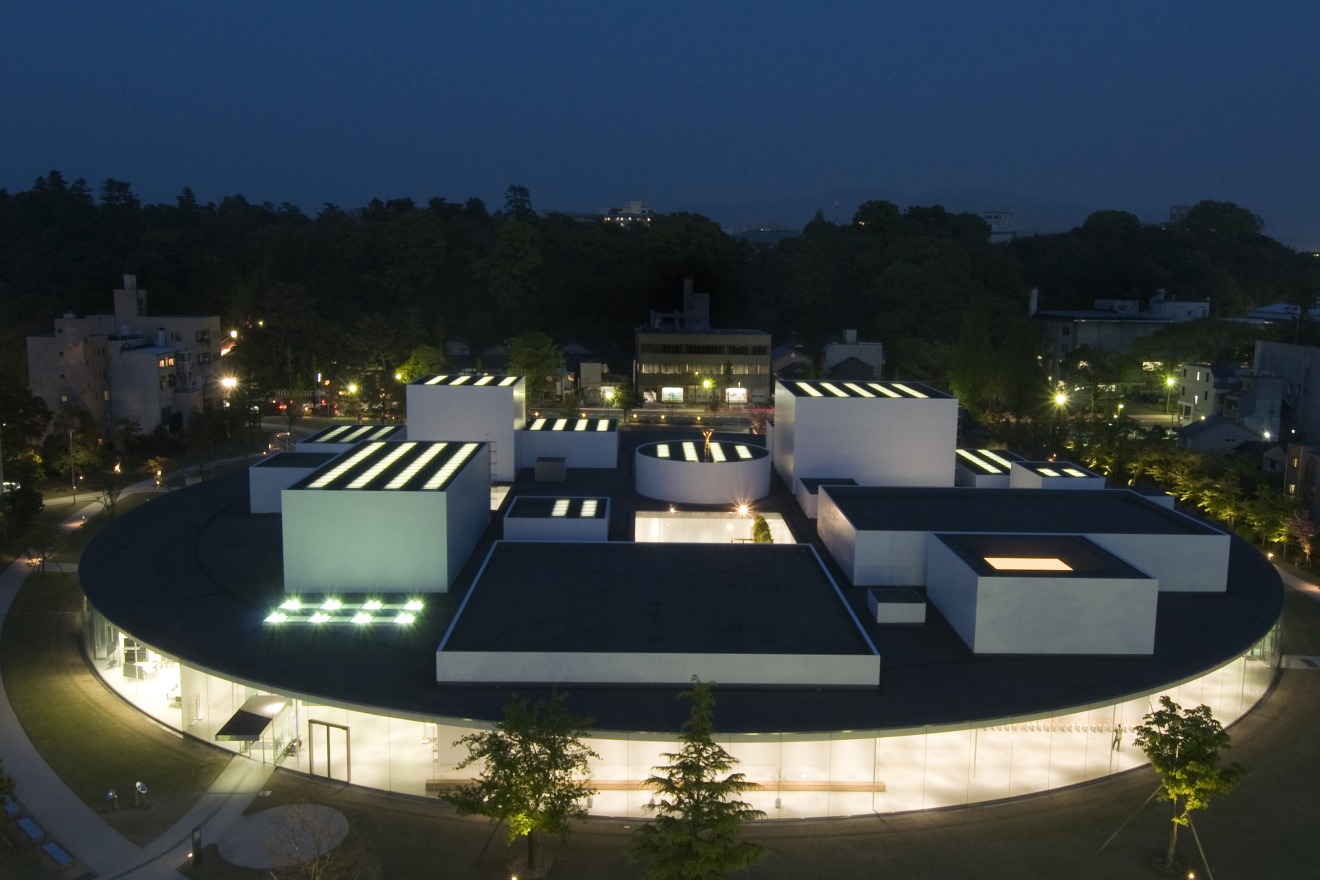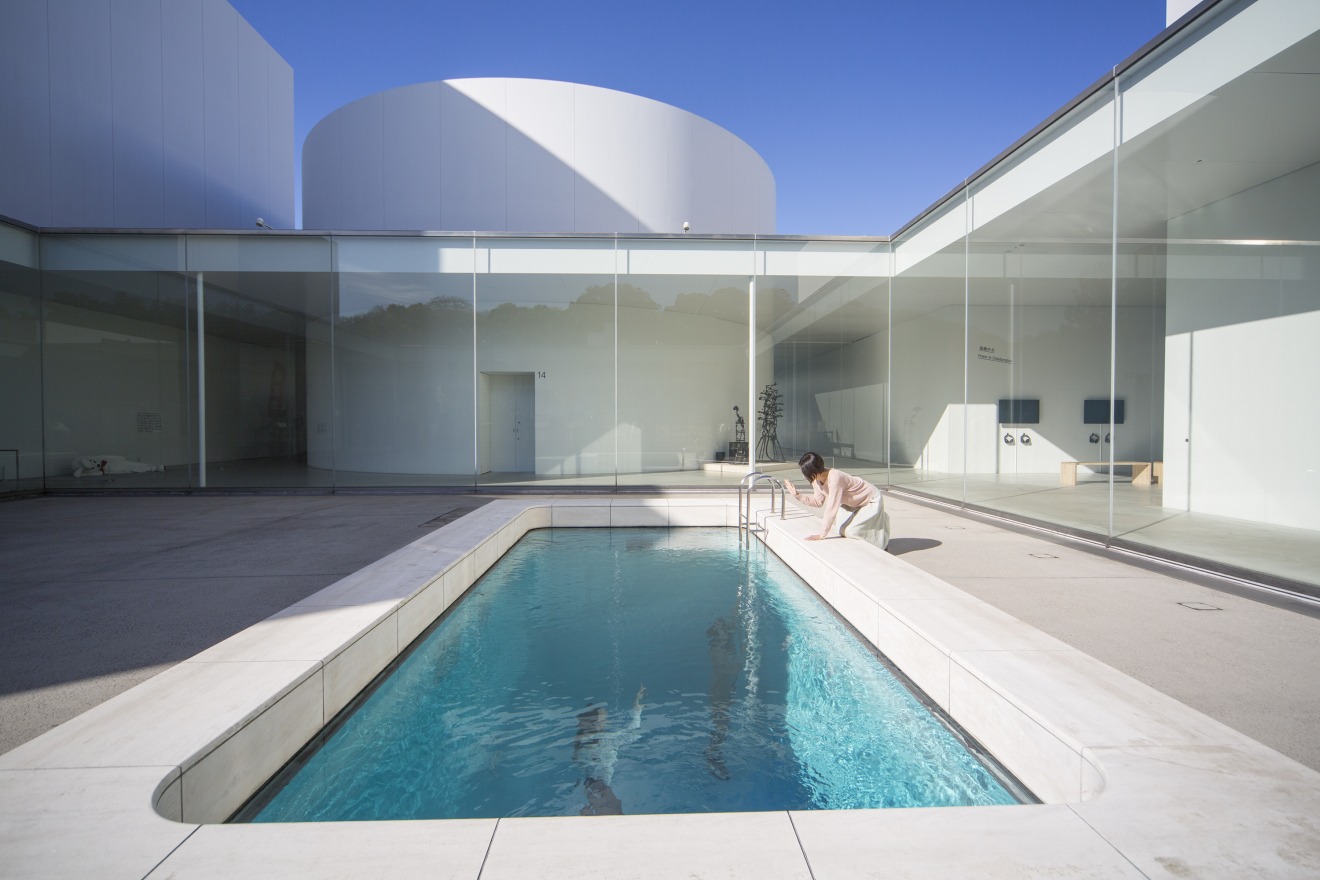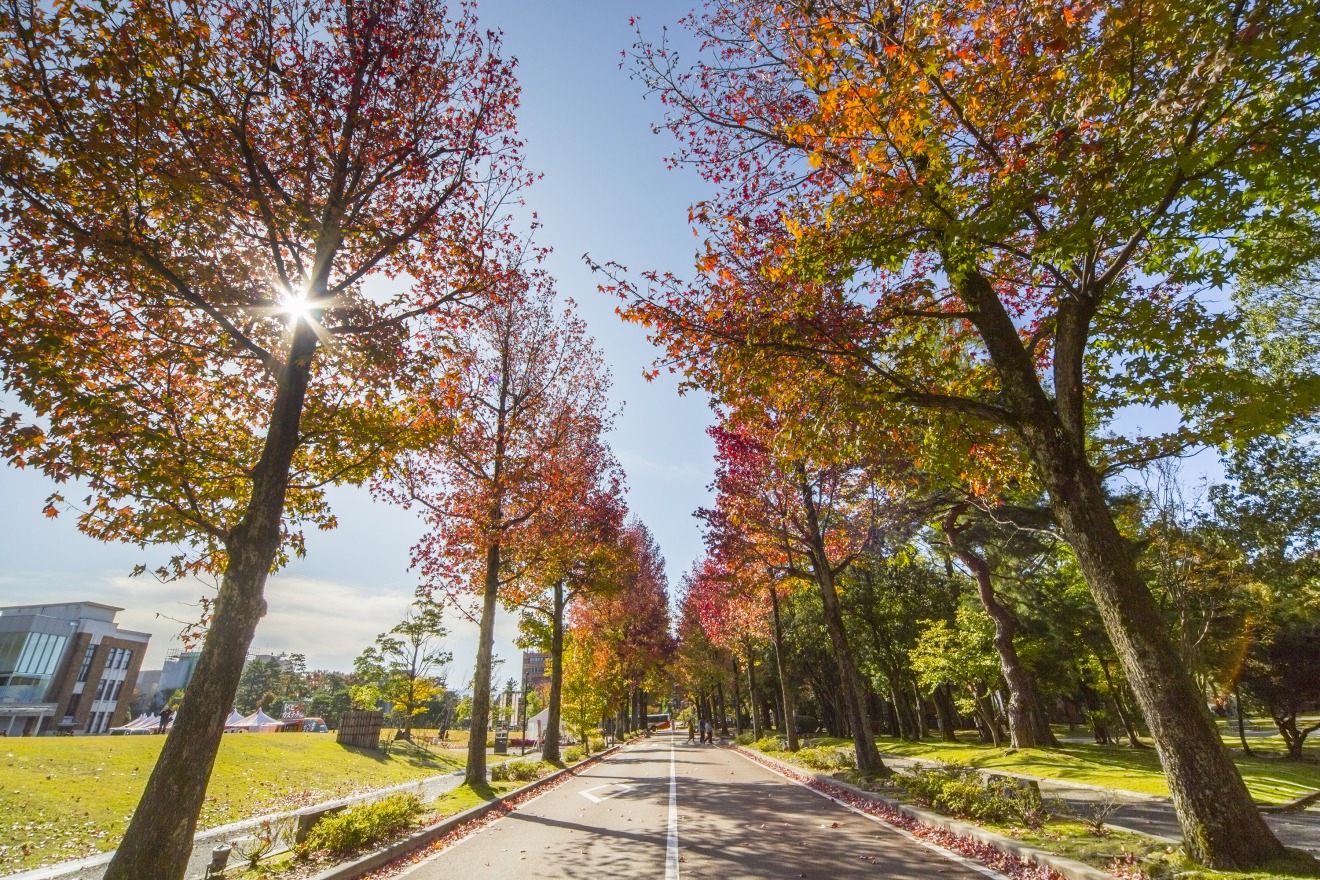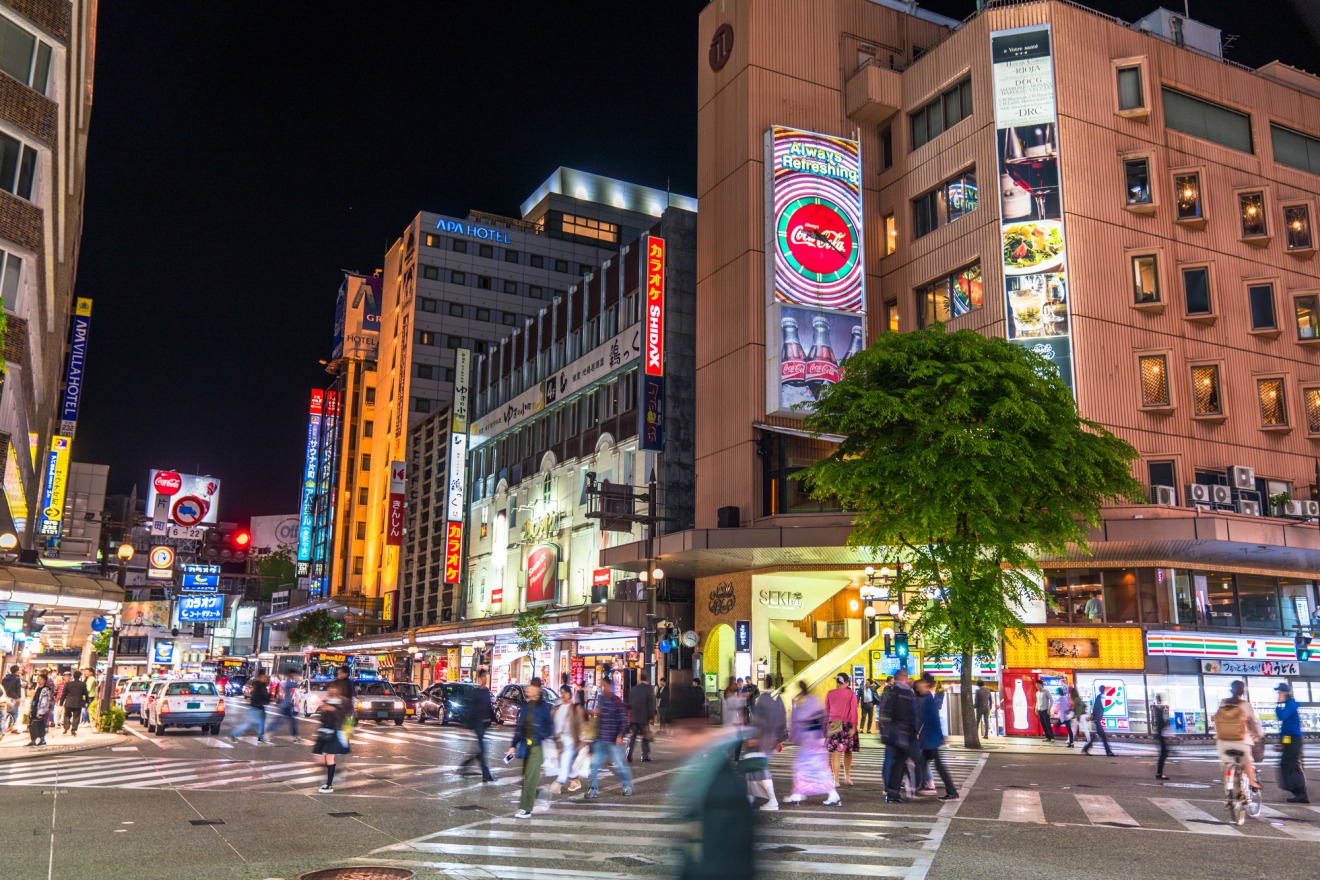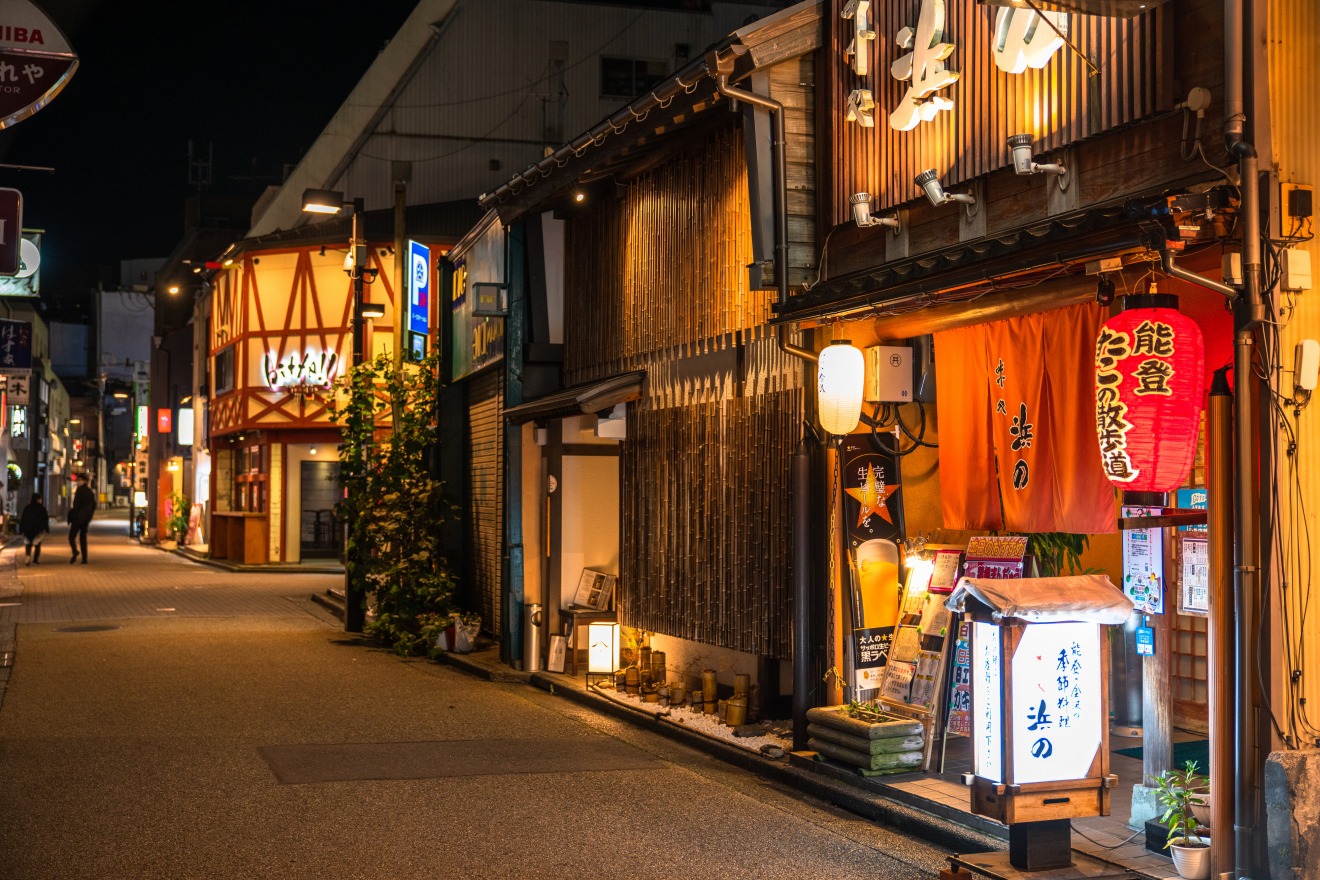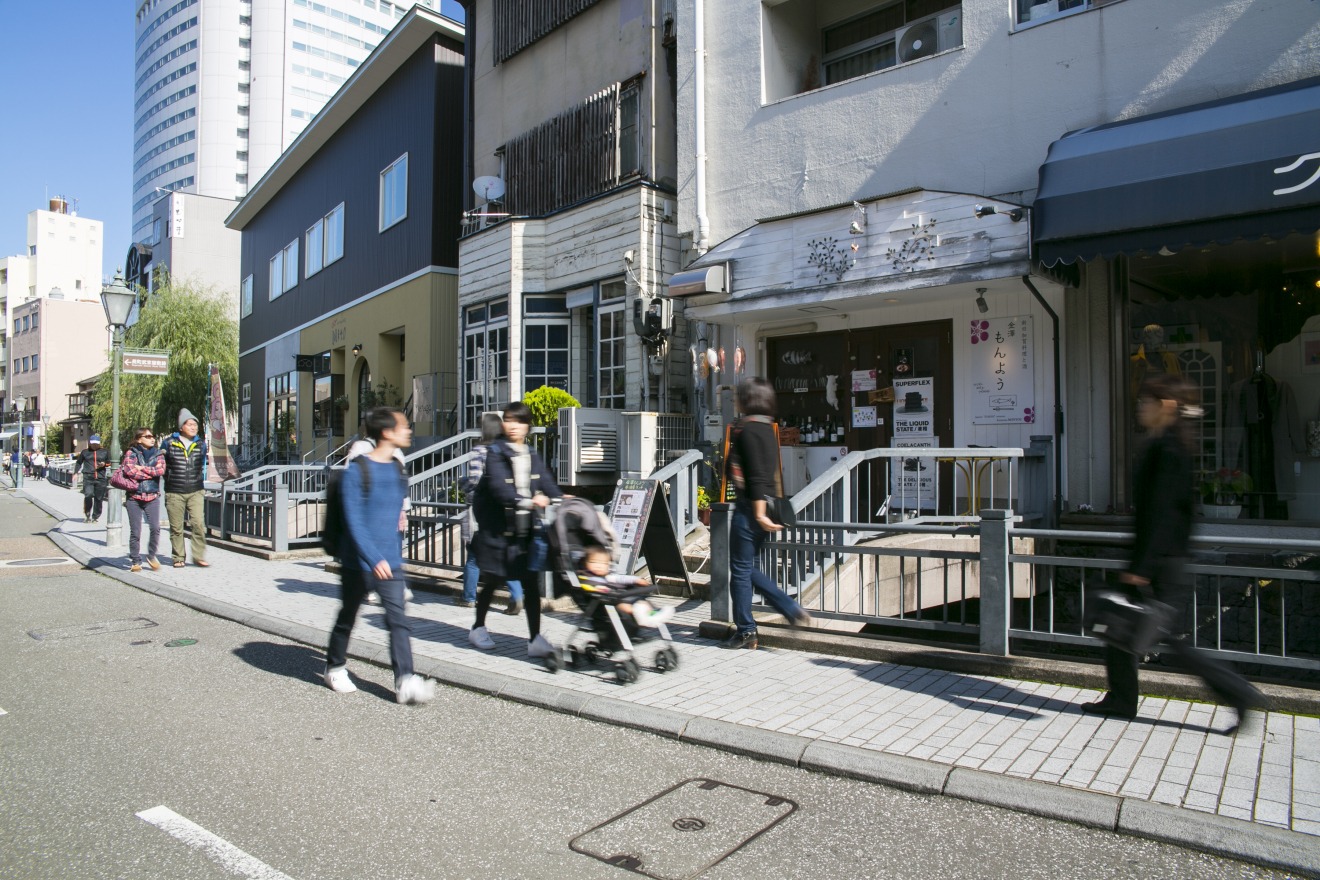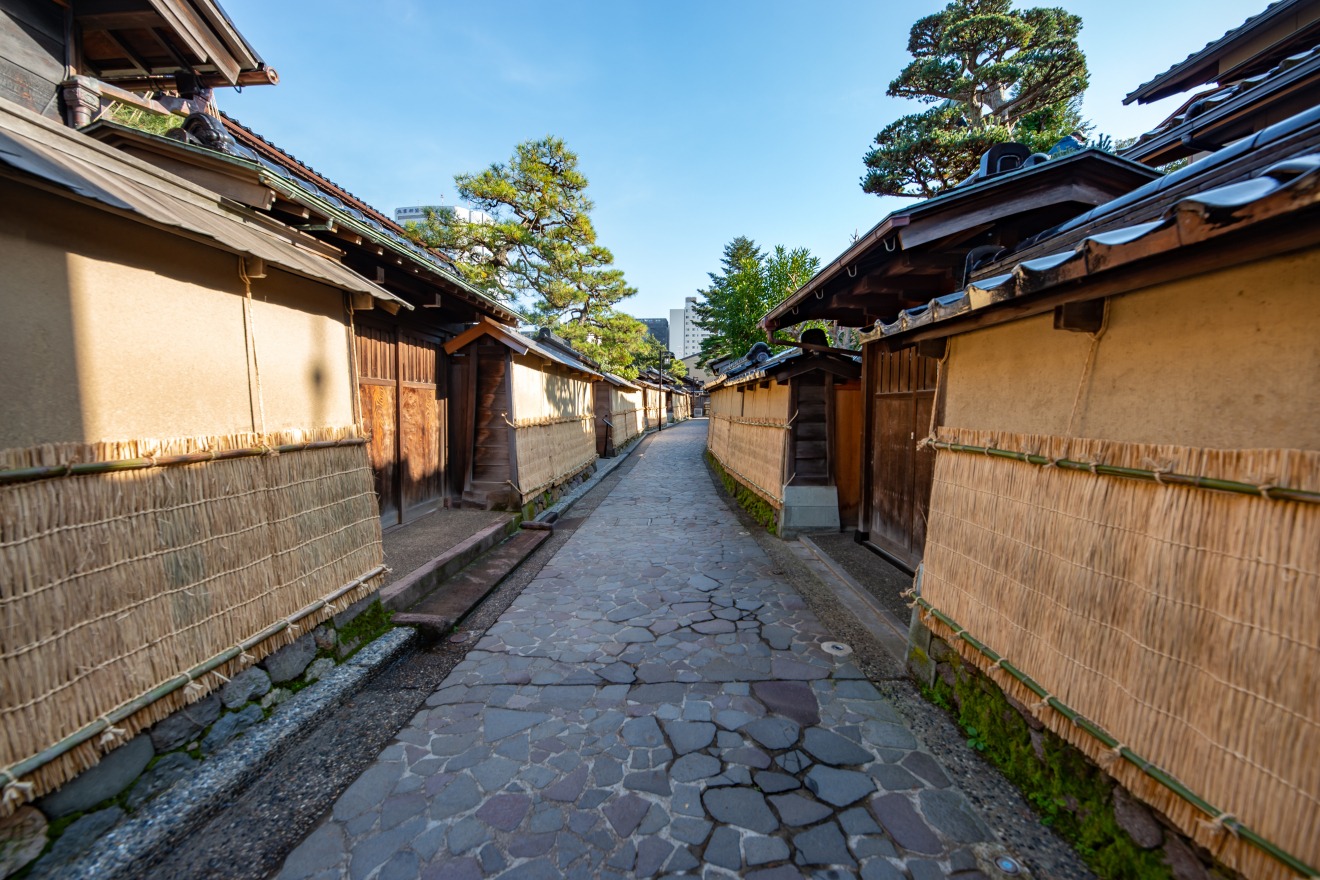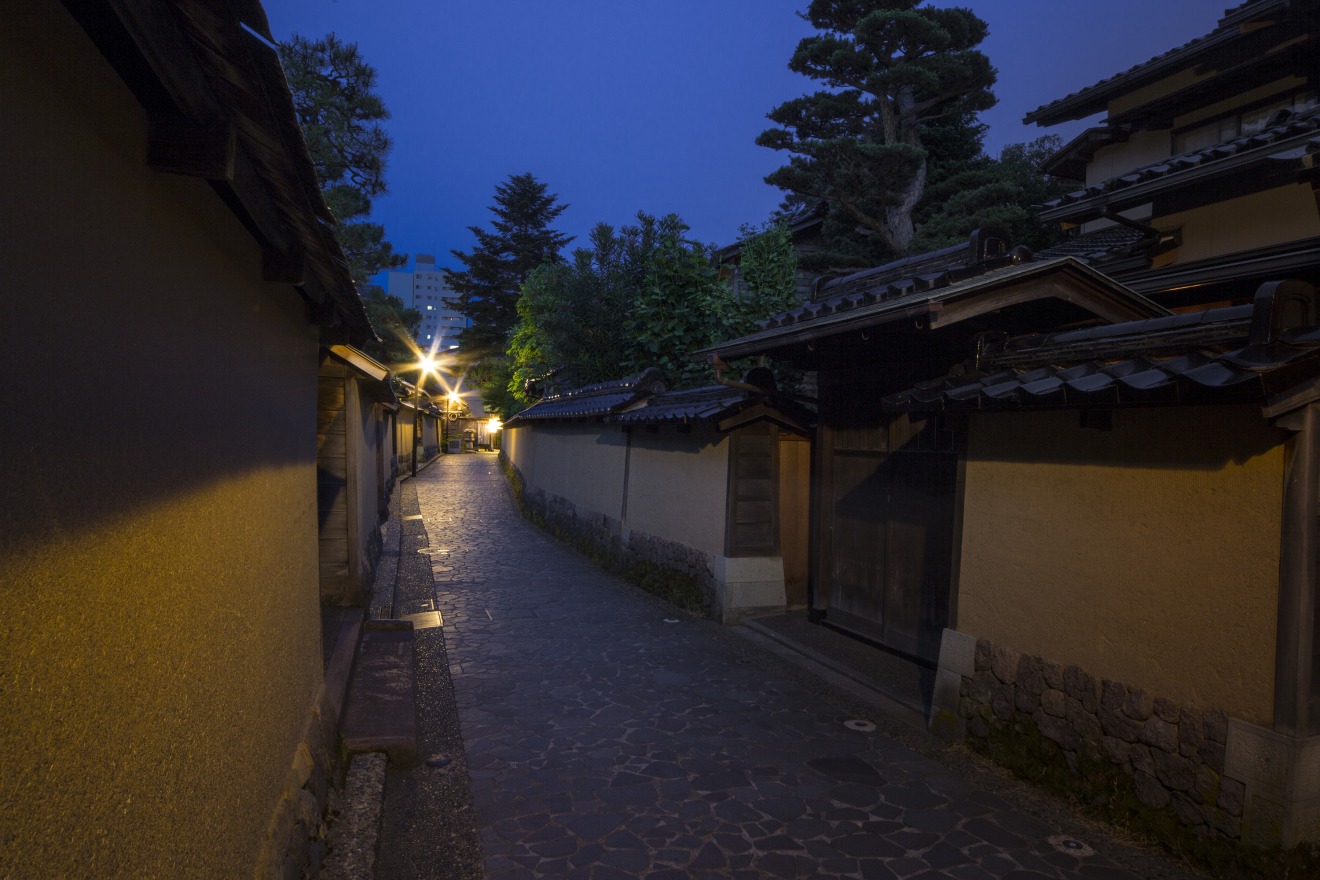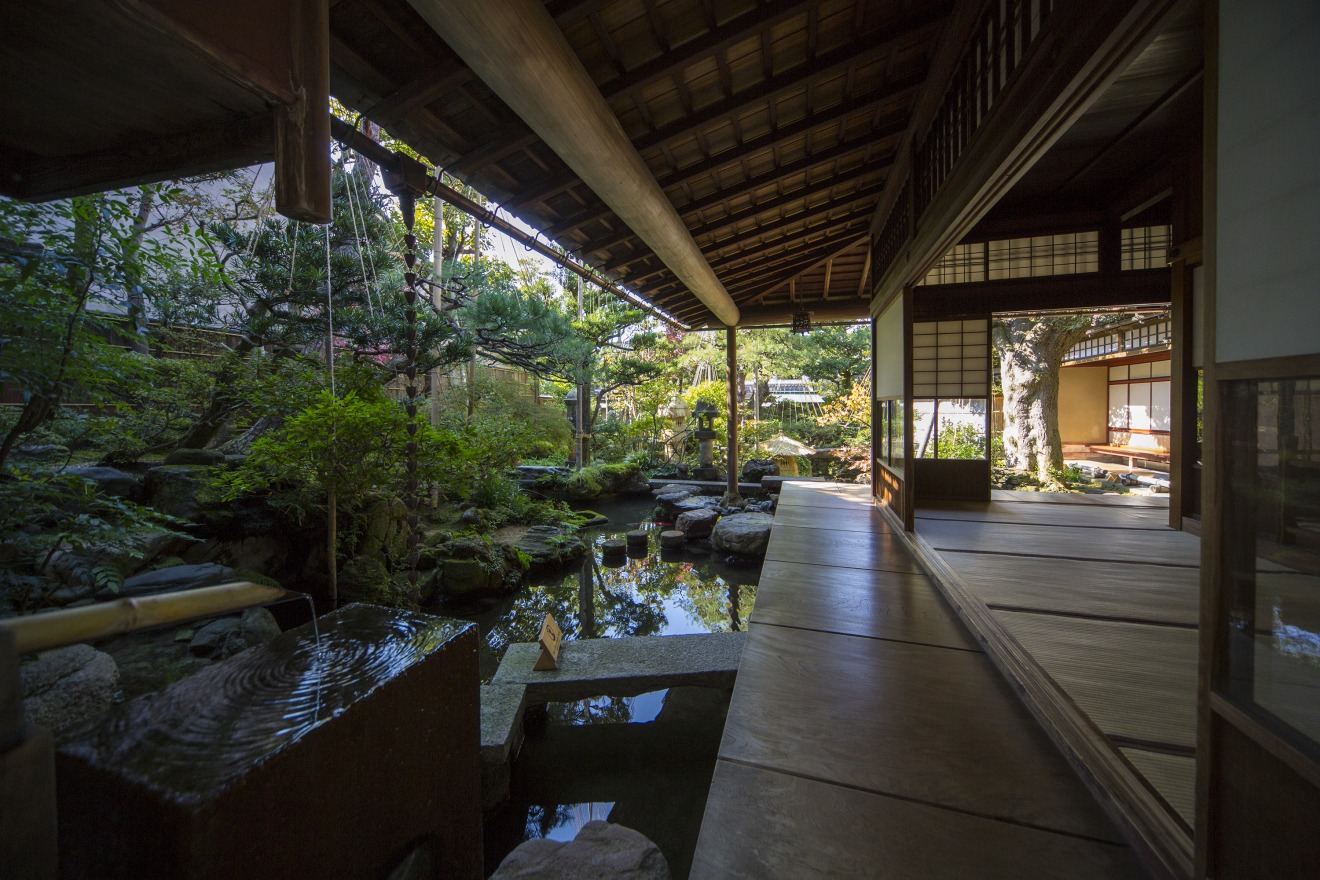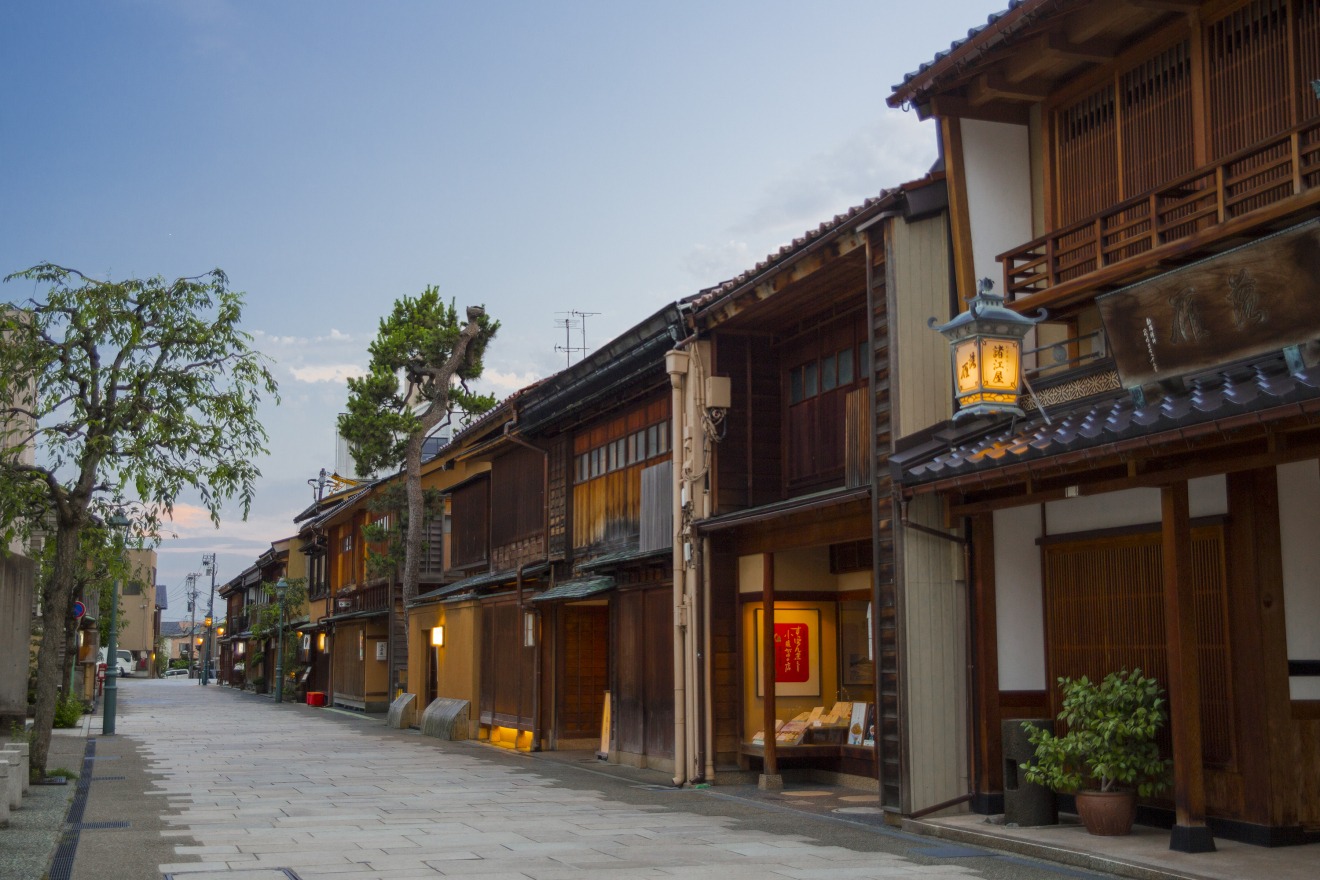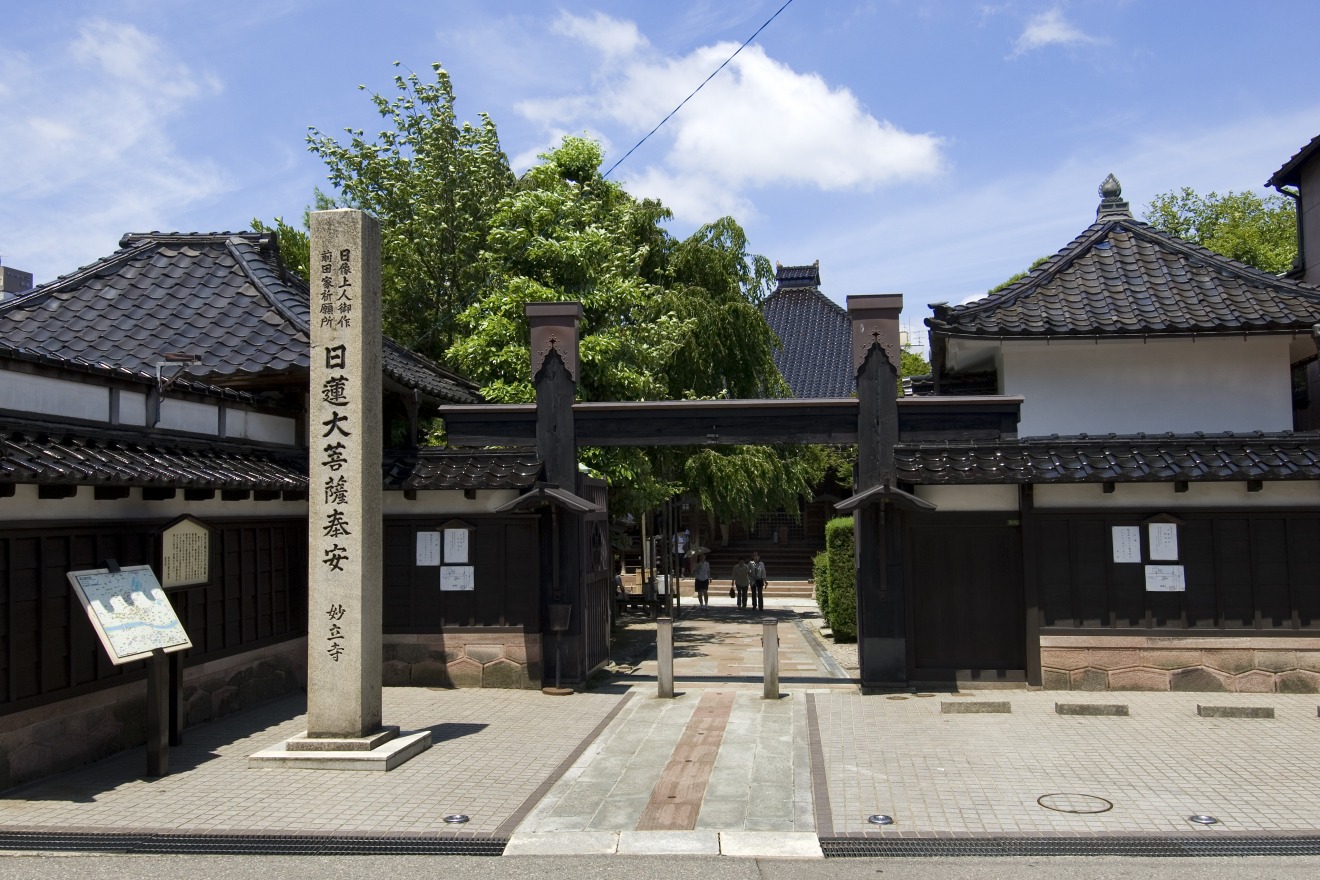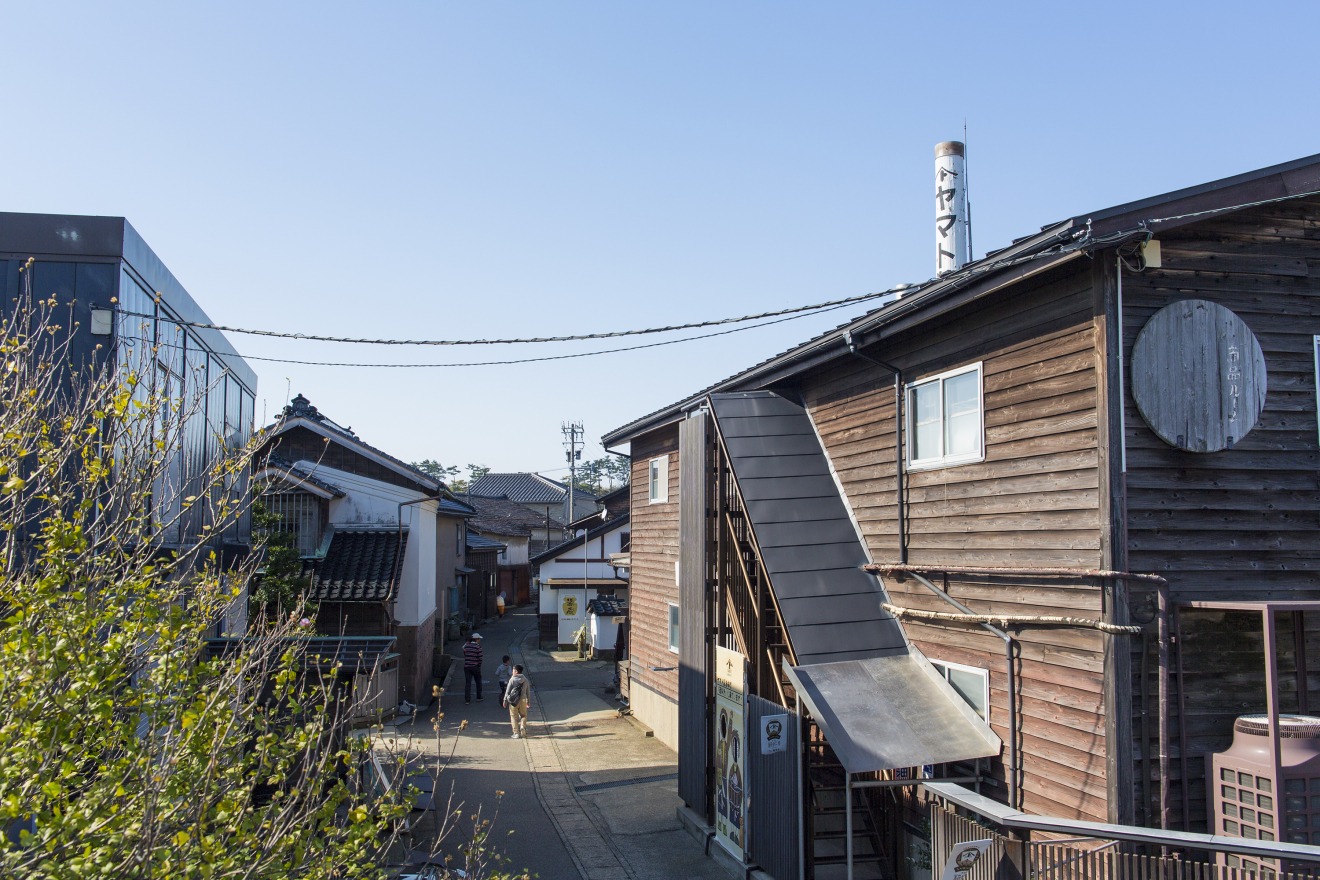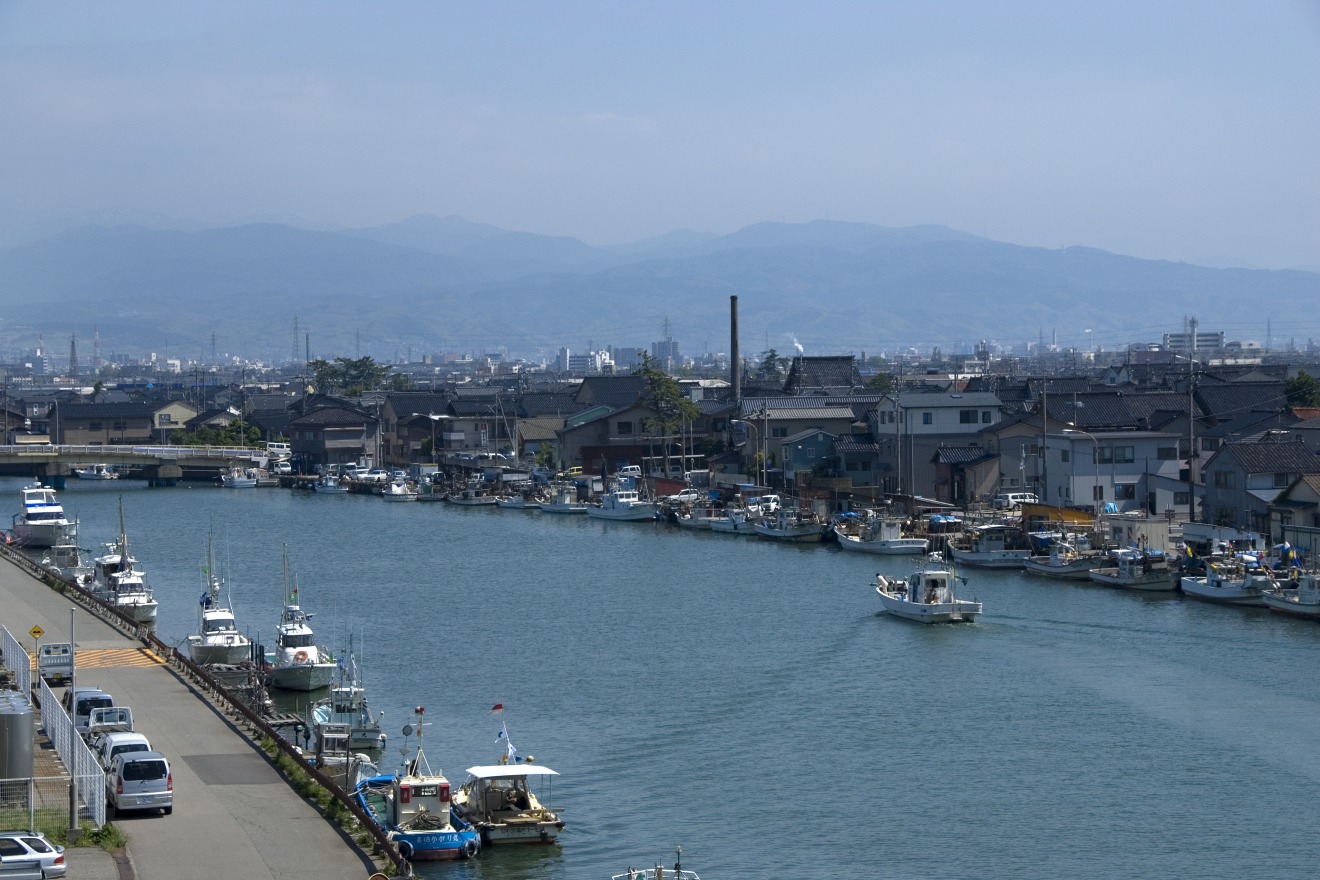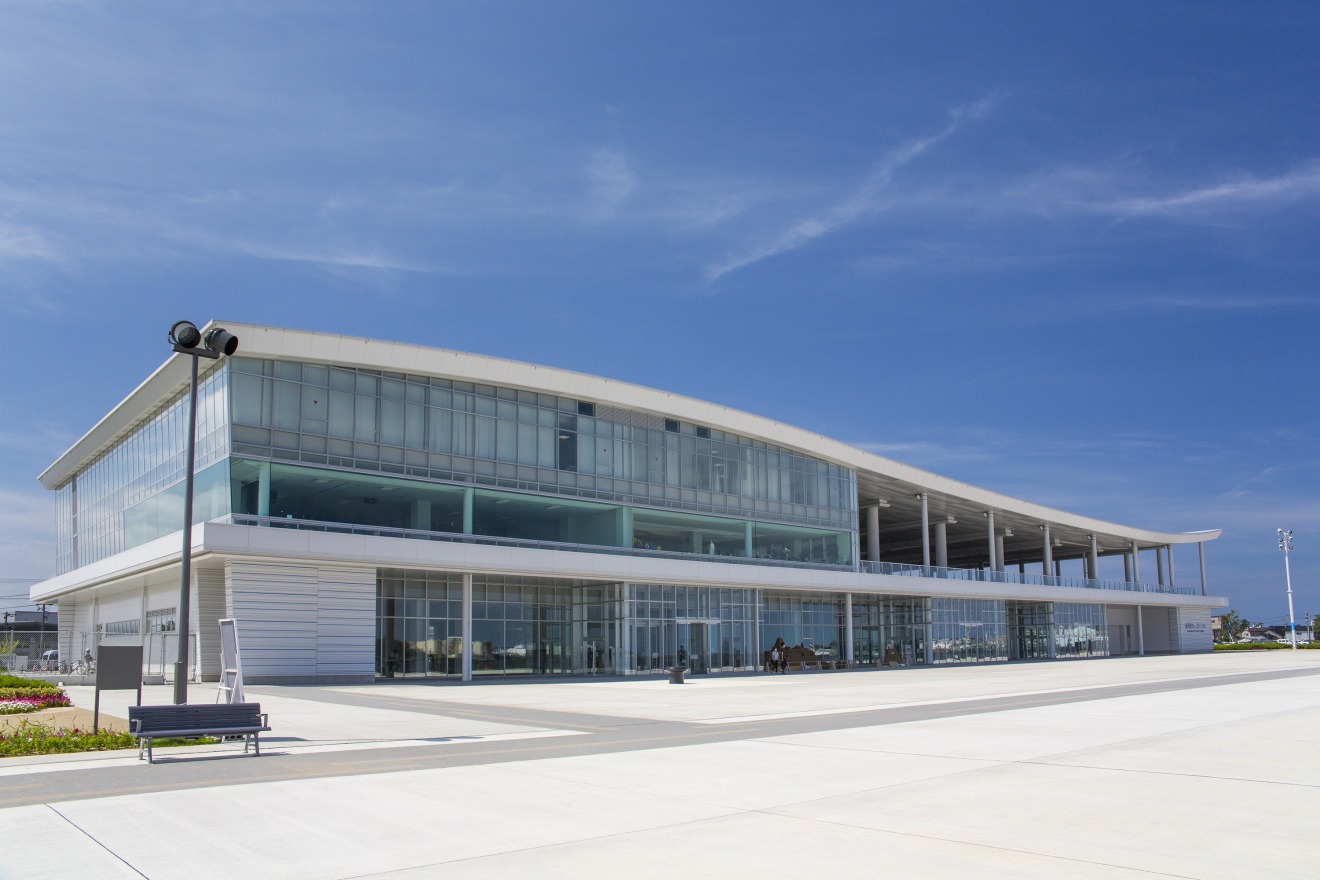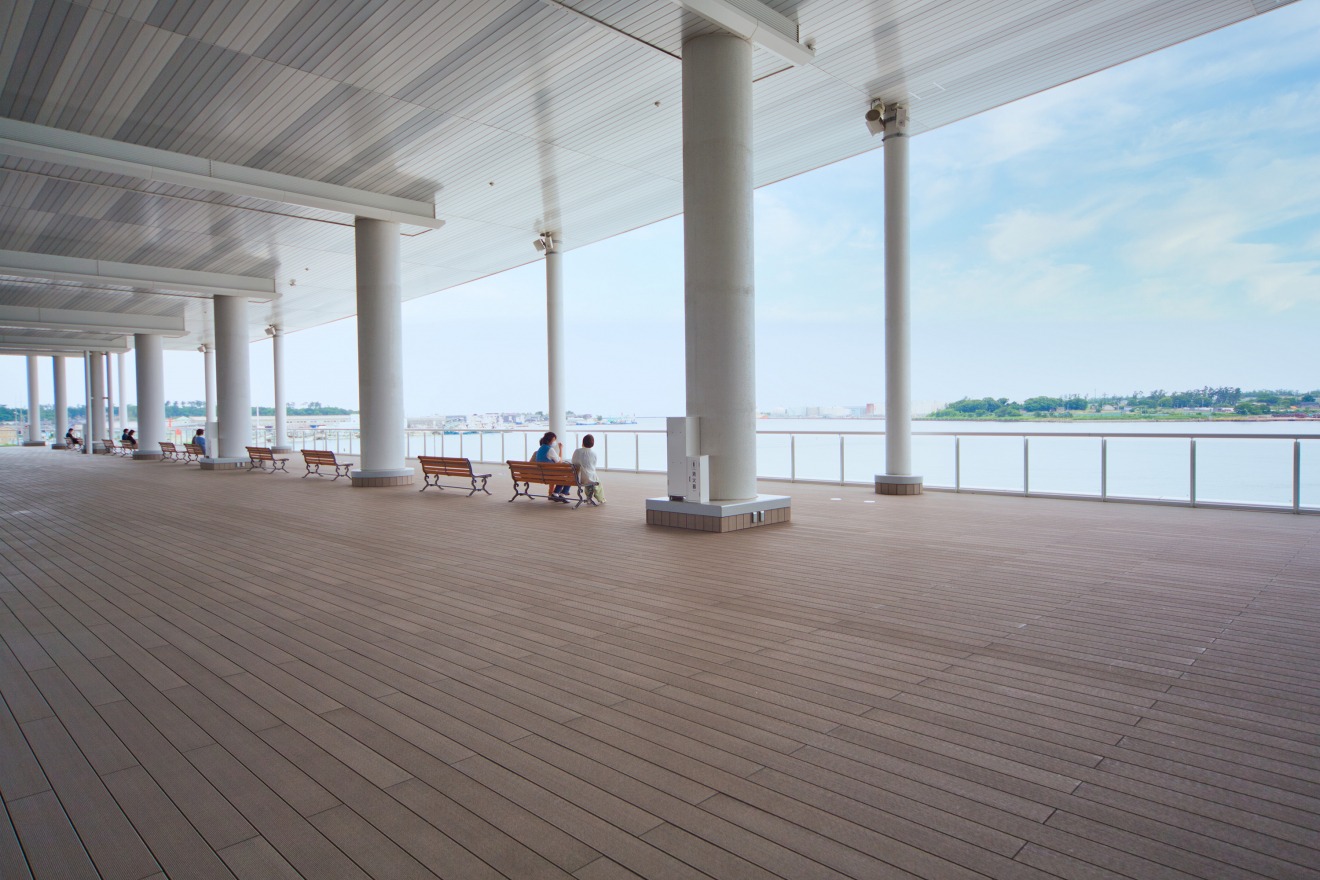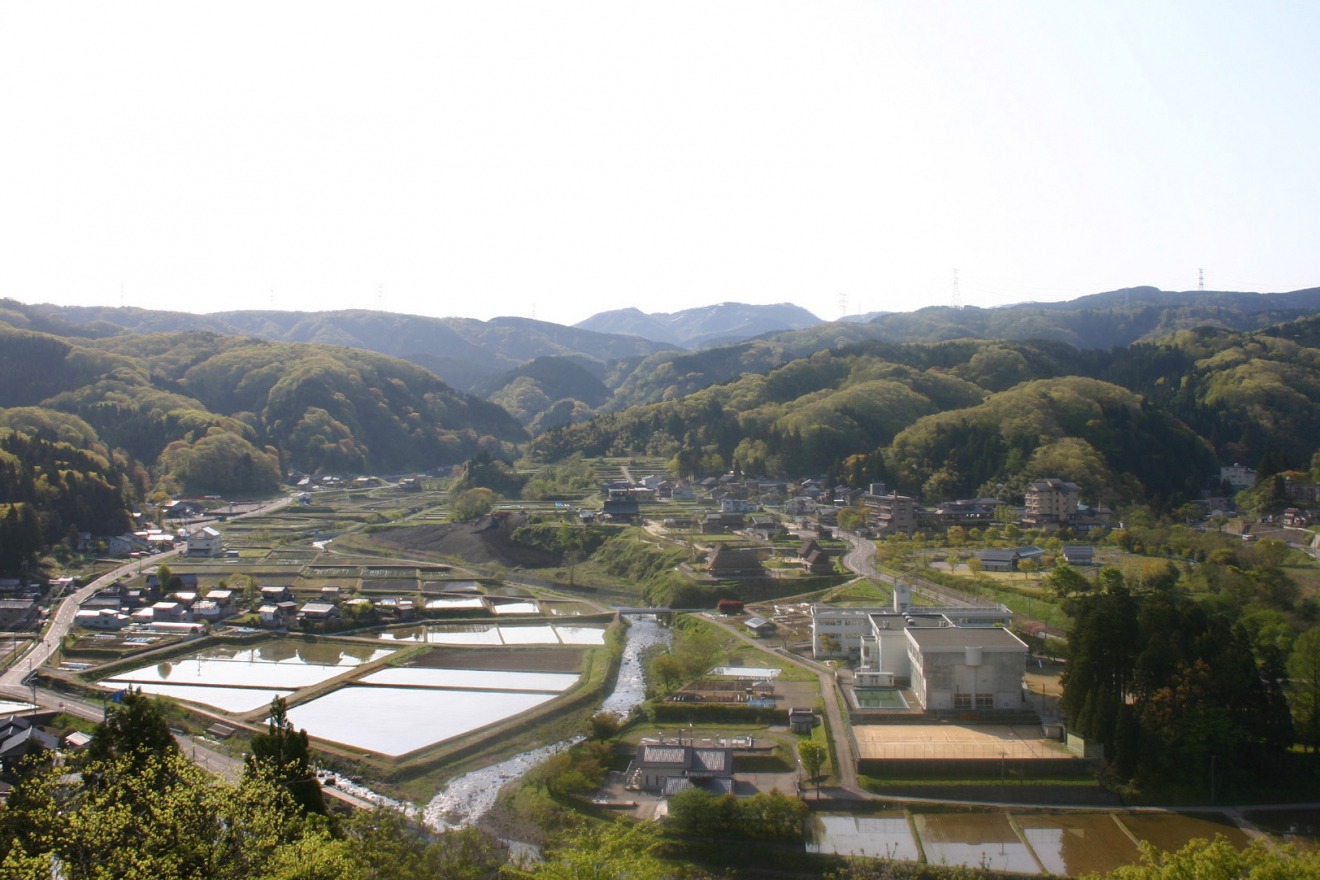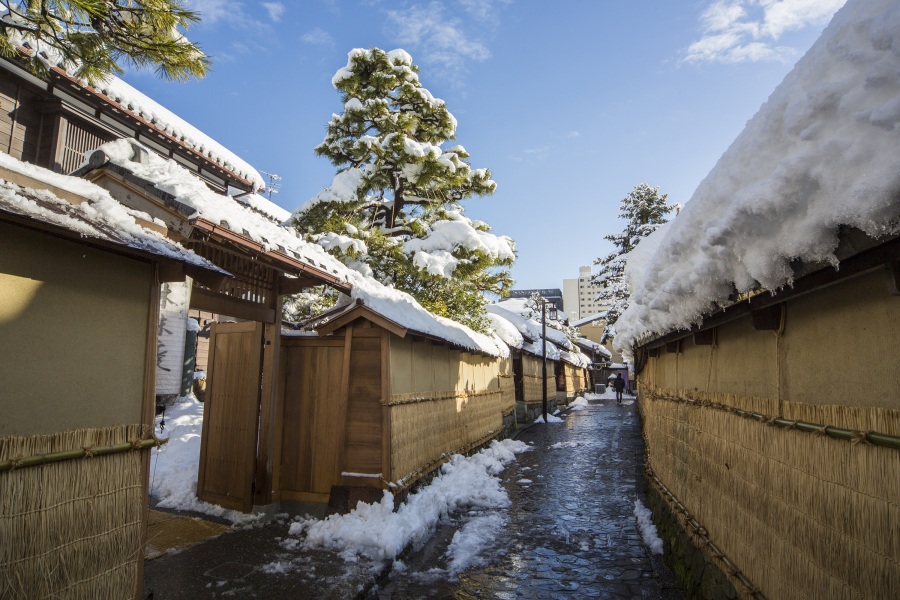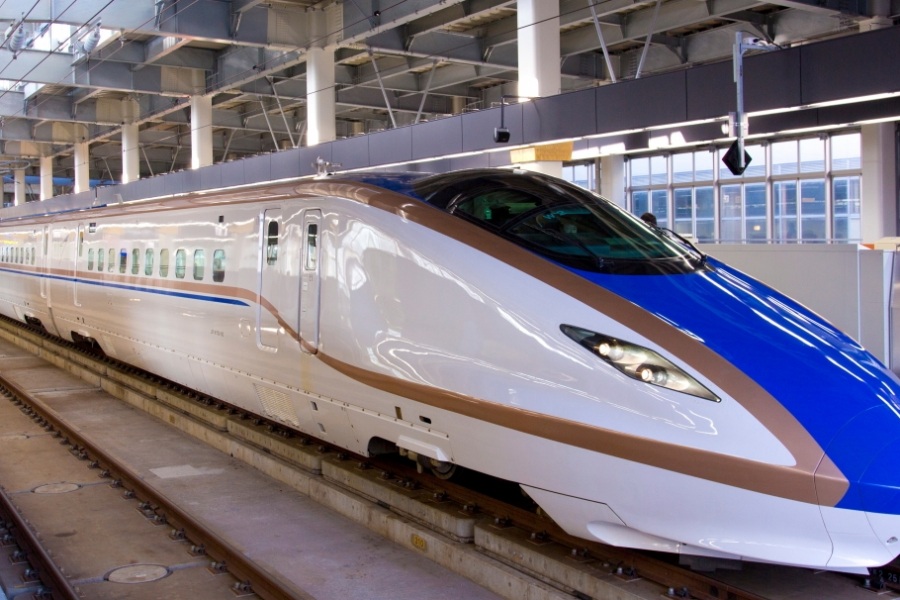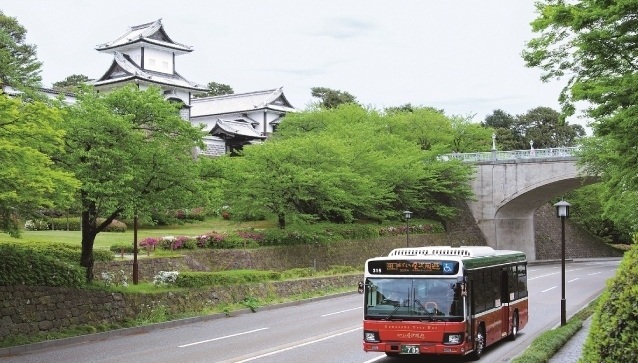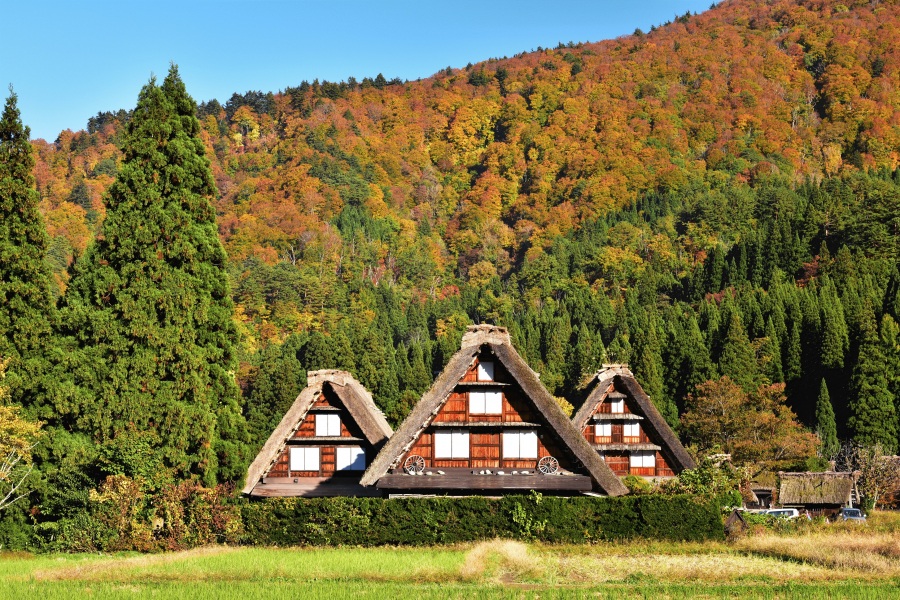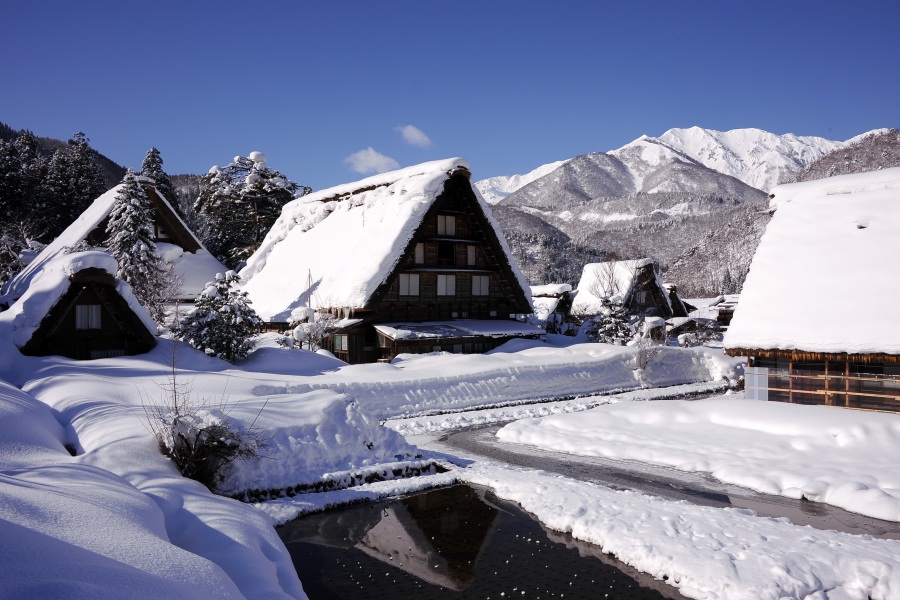The Kanazawa Area Guide
First-time visitors to Kanazawa city will undoubtedly find the city delightfully convenient to navigate. The city's layout is centered around Kanazawa Castle Park, with a circular tourist bus route connecting all of the major tourist areas around it, including Kanazawa Station. Here is a simple guide to each of those areas with our recommendations of things to do and see.
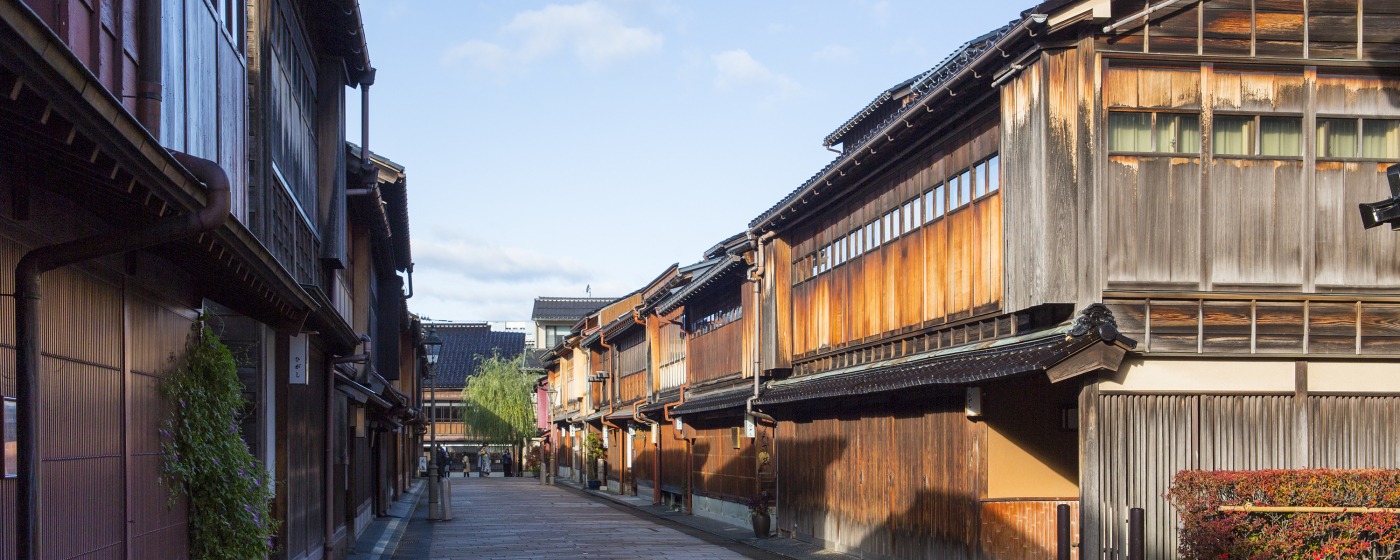
Kanazawa Station Area
If you arrive by rail, you'll understand immediately why Kanazawa Station has admirers from around the globe and was called one of the most beautiful train stations in the world by a major travel magazine. Besides its convenient layout and huge glass Motenashi Dome sheltering visitors from rain and snow, the station boasts one of Japan's most recognizable modern icons, the Tsuzumi-mon Gate, which honors the traditional performing art of Noh theater of Kanazawa city. There is shopping and food galore around the station, including Kanazawa Forus with seven floors of shops and restaurants. Kanazawa Hyakubangai shopping mall, attached to the station, has shops selling a mix of Japanese and international goods, including branches of Kanazawa's oldest traditional shops. You'll also find several large and convenient hotels within walking distance if you prefer accommodations near transportation hubs.
Higashi Chaya District
Higashi Chaya is the largest of the three historical geisha entertainment districts still existing in Kanazawa. Although you may not spot a real geisha during your visit, if you come in the evening, you might hear the sounds of geisha singing or playing traditional instruments floating through the streets. As a perfectly preserved neighborhood from Kanazawa's Edo Period history, local and overseas tourists alike enjoy dressing in a rental kimono or summer yukata and taking photos here. Many of the buildings that are no longer used as geisha houses have been repurposed as shops, restaurants, and chic cafes.
A few minutes' walk from Higashi Chaya is Kazue-machi Chaya, one of Kanazawa's three geisha districts. Along with Higashi Chaya, Kazue-machi Chaya shares the unique distinction of being designated as a Cultural Asset of Japan. Its intimate, narrow streets are an intriguing place to explore and photograph as you imagine the Kanazawa of centuries past. Be sure to visit in spring when the bright cherry blossoms appear on the trees and create a beautiful contrast with the wooden buildings.
The Old Site of Mr. Kurando Terashima’s House is also in the area, which once belonged to a mid-level samurai servant of the ruling Maeda family in the early 19th century. While the house is no longer fully intact from its original design, what remains is an accurate representation of the home of a fairly wealthy samurai family, with its earthen outer walls and wooden gate, large tatami rooms for entertaining, and intricately designed Japanese-style garden. The garden is the main attraction here, particularly in autumn when its 300-year-old azalea trees burst into fiery colors that will take your breath away.
Kanazawa Castle and Omicho Market Area
Kanazawa Castle is the place the city of Kanazawa revolves around, as it has been since Maeda Toshiie began his reign over the city and surrounding region in 1583 from within its sturdy walls. While many castle buildings no longer remain, several structures have been reconstructed, with others currently in progress. However, the sprawling castle park, with its well-preserved representation of castle wall building techniques, remains a place for visitors and locals alike to enjoy the natural beauty of the changing seasons and glimpse the samurai world of the Edo Period.
Within the park Gyokuseninmaru Garden, a lovely example of Japanese garden design is not to be missed. Enjoy a cup of matcha and Japanese sweets there while enjoying its tranquil atmosphere.
Opposite the newly reconstructed Nezumitamon Gate of the castle, Oyama Jinja is an impressive shrine dedicated to Kanazawa's revered founder Maeda Toshiie. Besides its lovely pond, which evokes images of Japanese musical instruments, its unique main gate fuses Japanese, Chinese, and European design aspects, including beautiful Dutch stained-glass windows.
Located a short distance from the castle's Kuromon Gate, Omicho Market has been the center of Kanazawa's culinary culture for centuries. About 170 stalls selling mainly food-related products are located in this covered market which also features restaurants serving the freshest seafood, grocery stores, clothing stores, and other sundries.
Kenrokuen Garden and Museum Area
Located south of Kanazawa Castle, Kenrokuen Garden is another of Kanazawa's iconic locations. Constructed over several centuries with the six attributes that make the perfect garden, it's no wonder Kenrokuen is considered one of the three famous gardens of Japan. What's more, a stroll through the garden is an entirely different experience in each of the four seasons.
Adjacent to the garden, Seisonkaku Villa is a beautiful former residence built for the mother of the 13th lord of the Maeda clan. It was originally considered a palace, and the elegant decor within represents the finest elements of Japanese and Western craftsmanship of the late 19th century. Next door to the Villa, you'll find the Ishikawa Prefectural Museum for Traditional Products and Crafts featuring all 36 of the designated traditional crafts of Ishikawa. From silk kimono to delicate porcelain to glossy lacquerware, see some of the finest works of handmade crafts from the region on display here.
Near Kenrokuen Garden, you'll find several of Kanazawa's other major museums: the National Crafts Museum, the only national museum in Japan dedicated to crafts, the Prefectural Museum of Art with its ever-changing exhibitions of exquisite Japanese art, and the D.T. Suzuki Museum, an architectural masterpiece designed to help visitors understand the Zen Buddhist philosopher’s ideas and give them a quiet place to contemplate them.
Downtown and Nagamachi Area
Heading west from the garden and museums, you'll encounter the sleek and circular 21st Century Museum of Contemporary Art, Kanazawa surrounded by a large grassy area. The museum features large-scale outdoor displays, a rotating exhibition of new art collections, and the whimsical permanent piece known as "The Swimming Pool," which must be experienced to appreciate fully.
Passing the American Maple Street, an incredible sight of gold and red during the autumn season, you'll find yourself in the heart of Kanazawa's shopping and dining district. Here, you'll find luxury hotels, shopping plazas, and streets lined with shops, restaurants, and cafes. The area is eclectic with an old-meets-new atmosphere of boutiques, pubs, and restaurants inhabiting buildings from eras long past. Foodies and pub crawlers will enjoy the tiny izakaya bars and restaurants of all types lining the streets in this area.
From this area, turn down the quiet street leading into the Nagamachi Buke-Yashiki District. Once the residential neighborhood of middle-ranking samurai, many of the homes are well preserved by their current owners. The high earthen walls surrounding these architectural beauties conceal all but a tantalizing glimpse of what is beyond them, but fortunately, you can tour the Nomura Samurai House to satisfy your curiosity.
Other Areas
On the other side of the river from Katamachi, you'll find the Nishi Chaya District, one of Kanazawa’s three geisha districts, and the Teramachi Temple Area, an area populated with many old temples, including Myoryu-ji Temple, known as the Ninja-dera Temple for its array of traps and self-locking doors that could be used to thwart an enemy attack on the city.
Around Kanazawa Port, visit the Iki-iki uoichi Market, or take a tour of a soy sauce and miso company, where you can also enjoy a delicious meal made with the products manufactured there. The Kanazawa Cruise Terminal is also here, which holds occasional concerts and illumination events.
Just outside of the city center, Yuwaku Onsen is a relaxing retreat consisting of a public onsen hot springs facility and nine ryokan inns with their own private hot springs. A night spent in Yuwaku Onsen is the perfect complement to a trip to Kanazawa city, staying in a traditional Japanese-style inn with exquisite meals and soothing baths all-inclusive.
These are merely a few of the highlights of Kanazawa; there is much more to see, do, and eat as you explore our city. And who knows what you might discover on your own in the places in-between?
